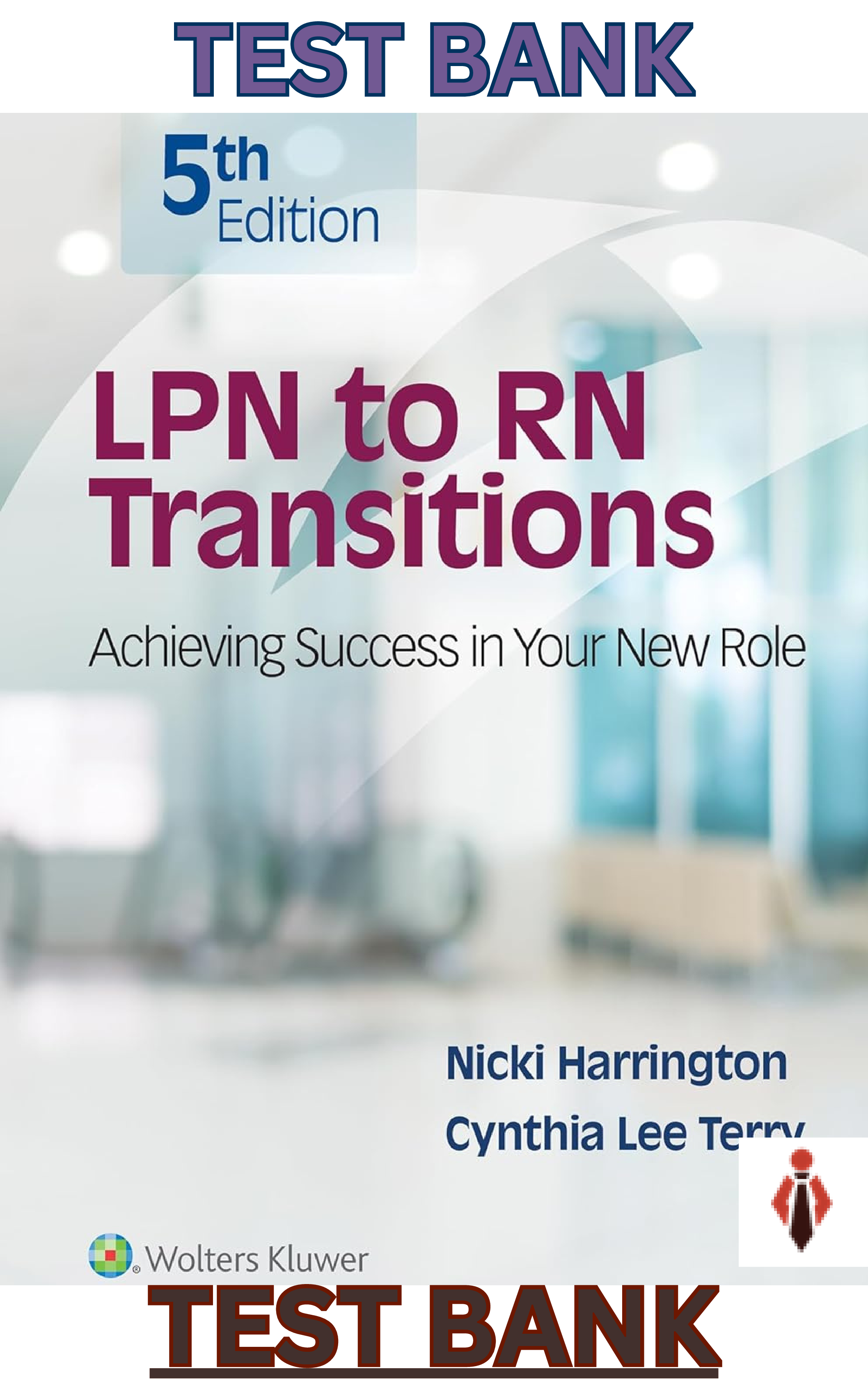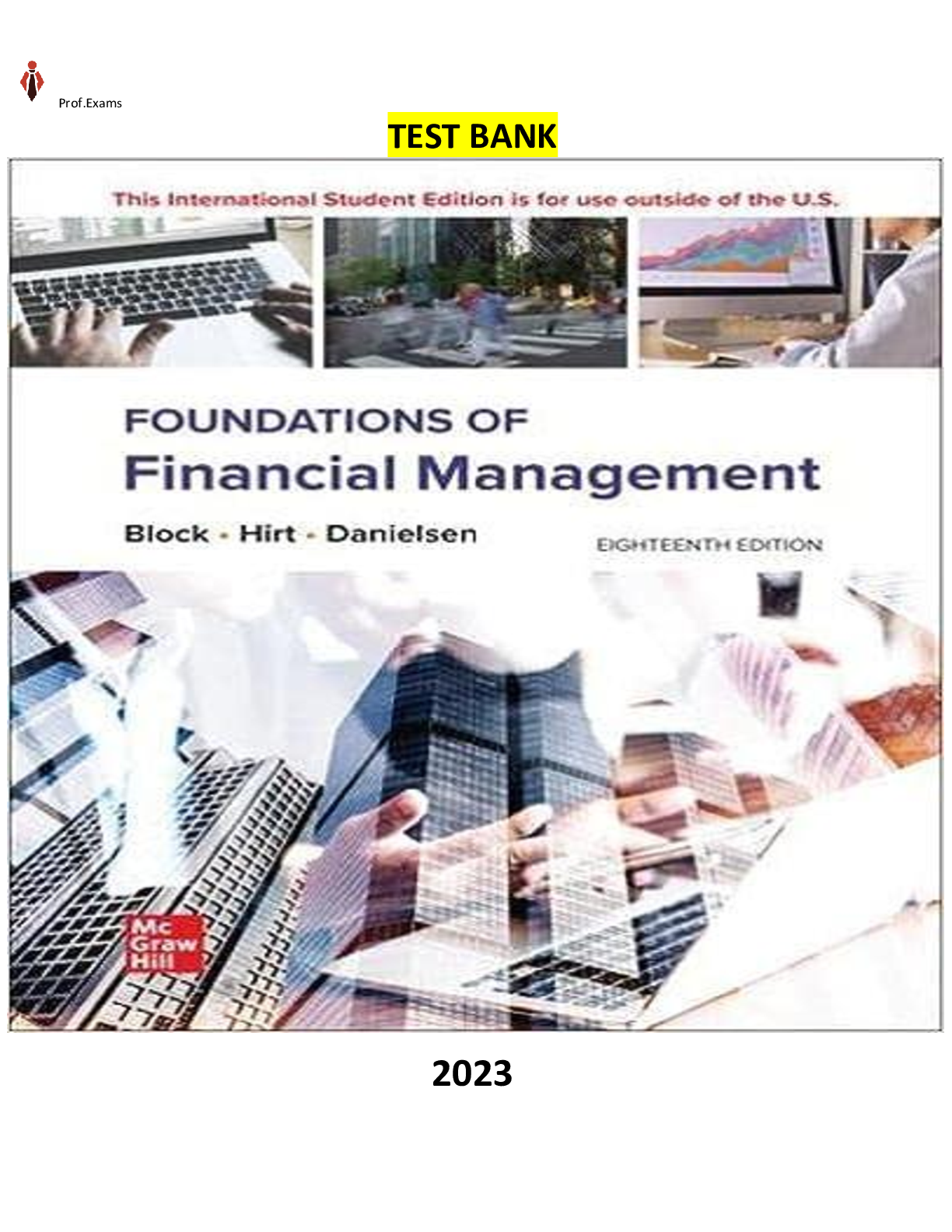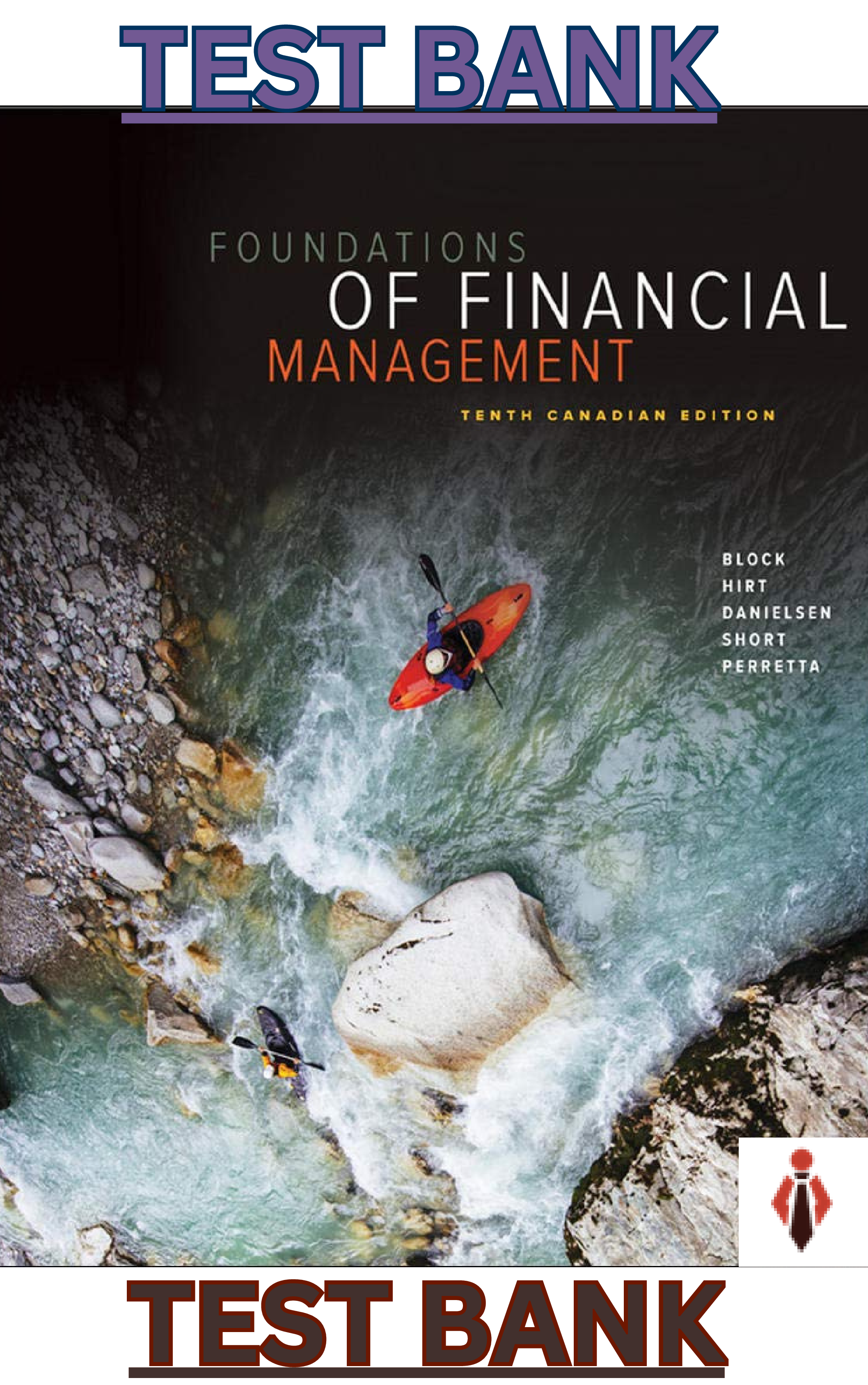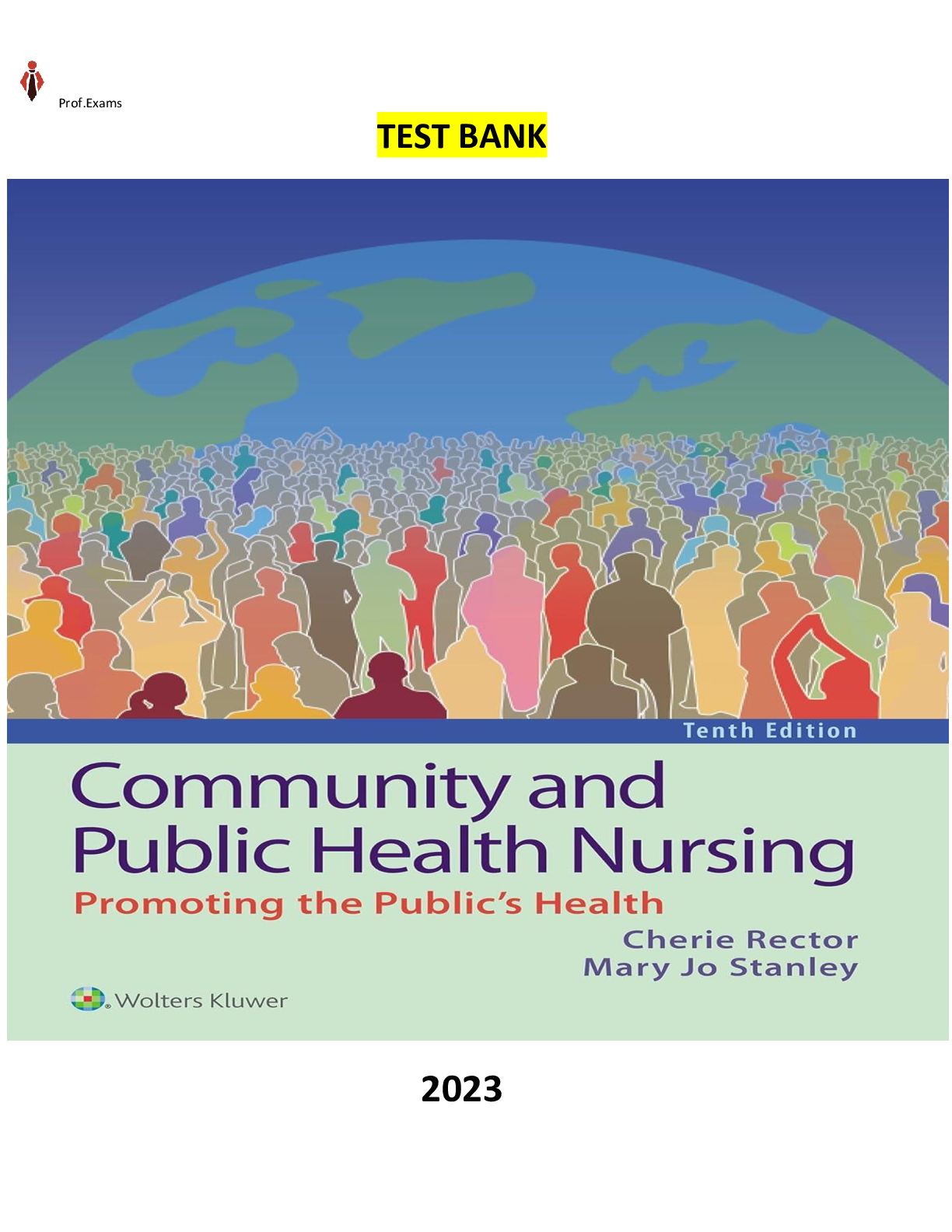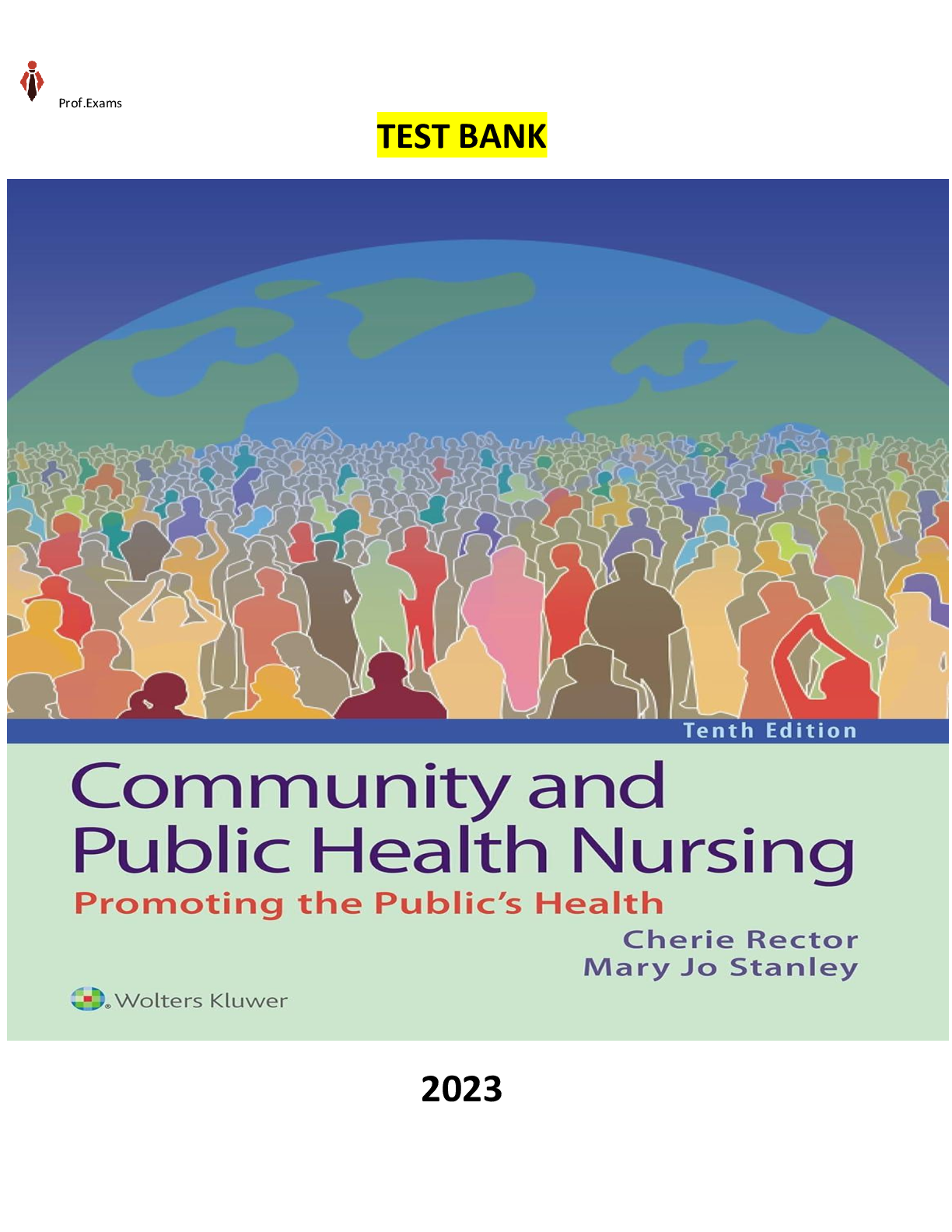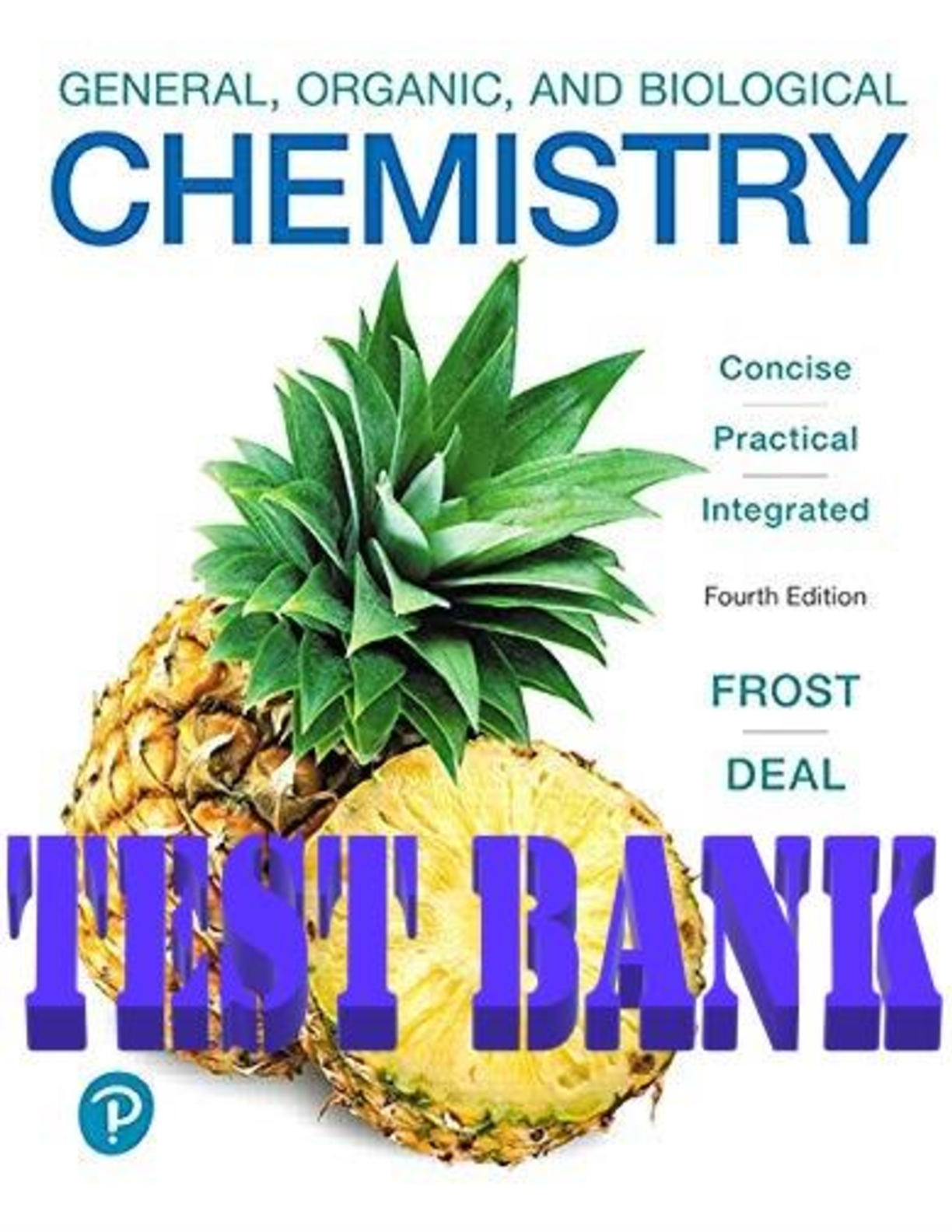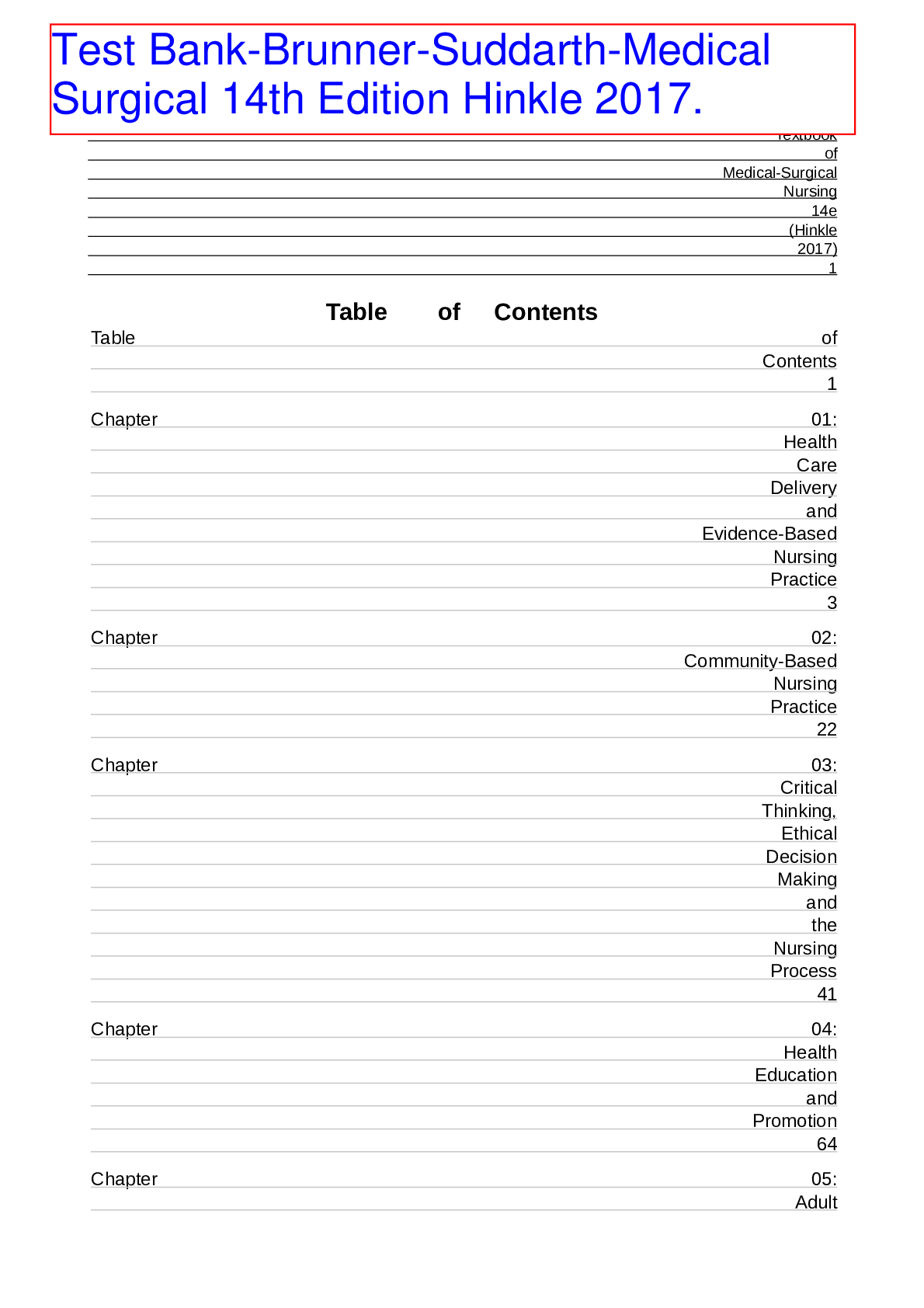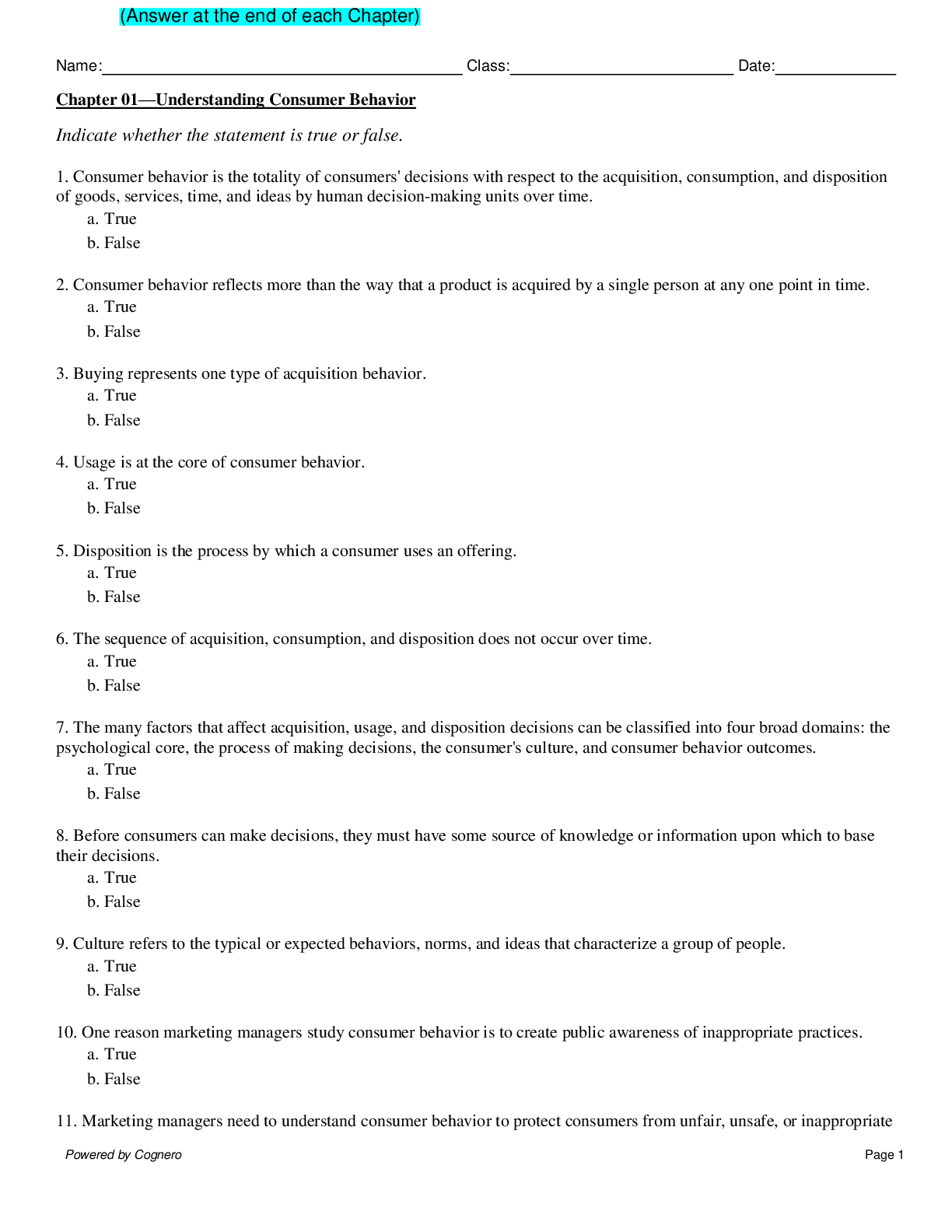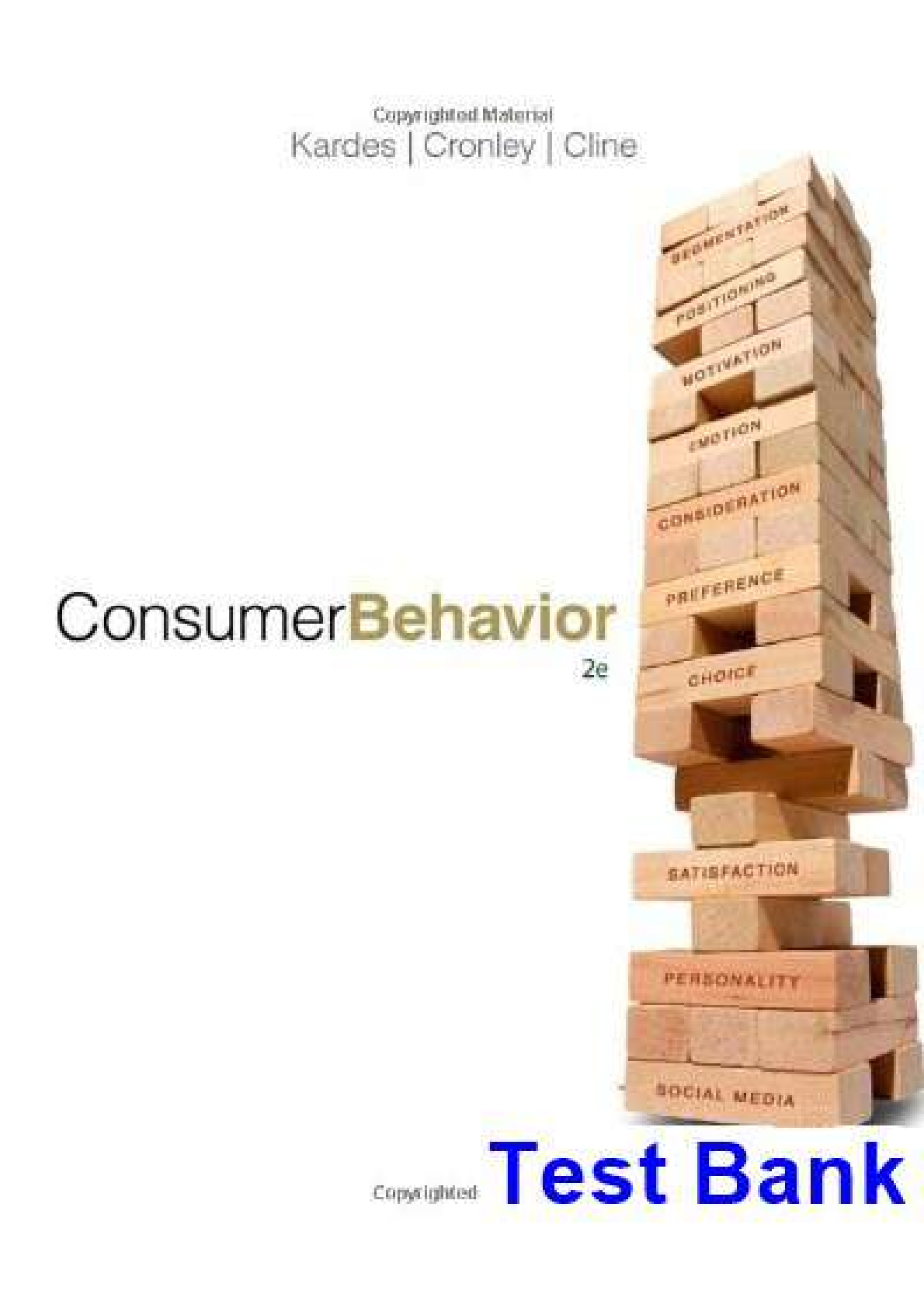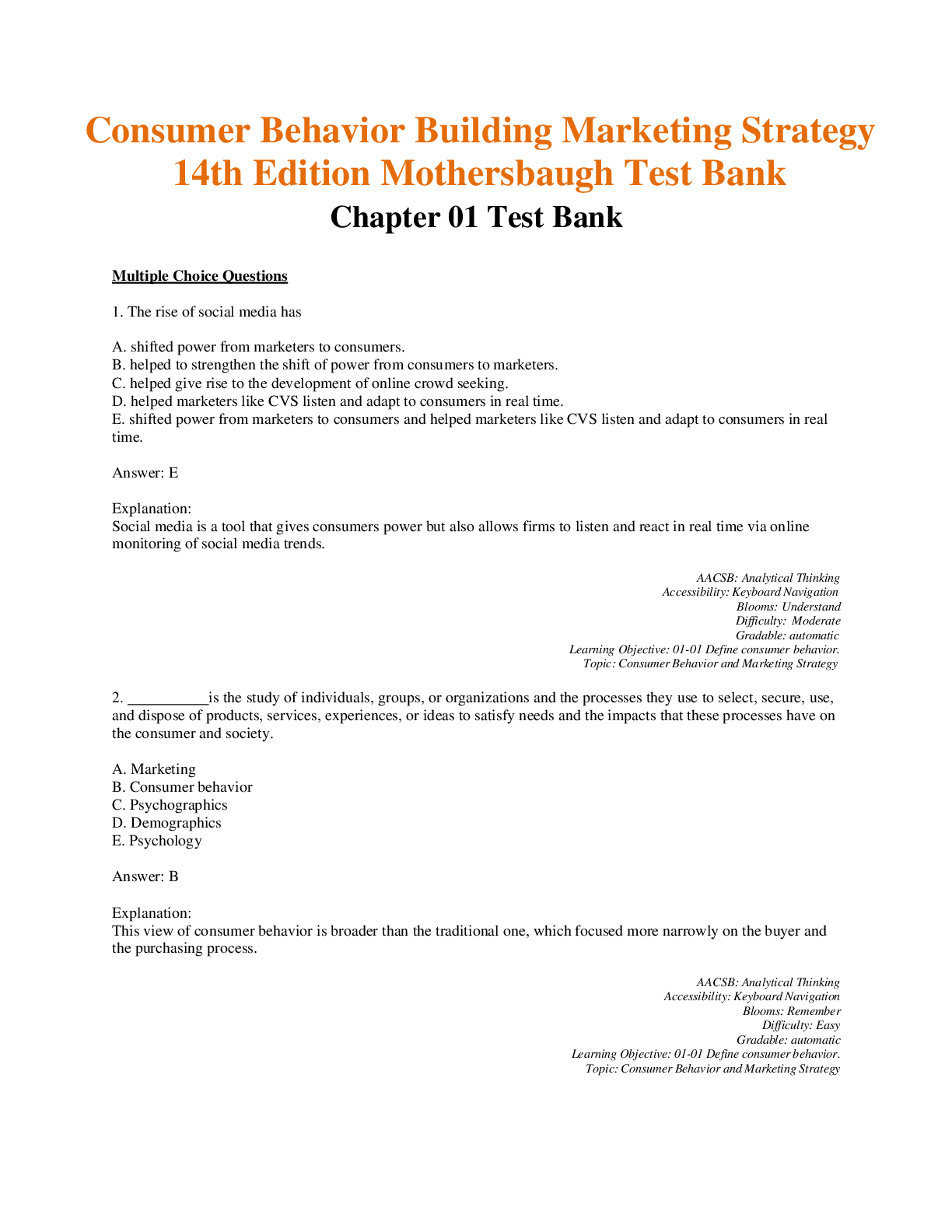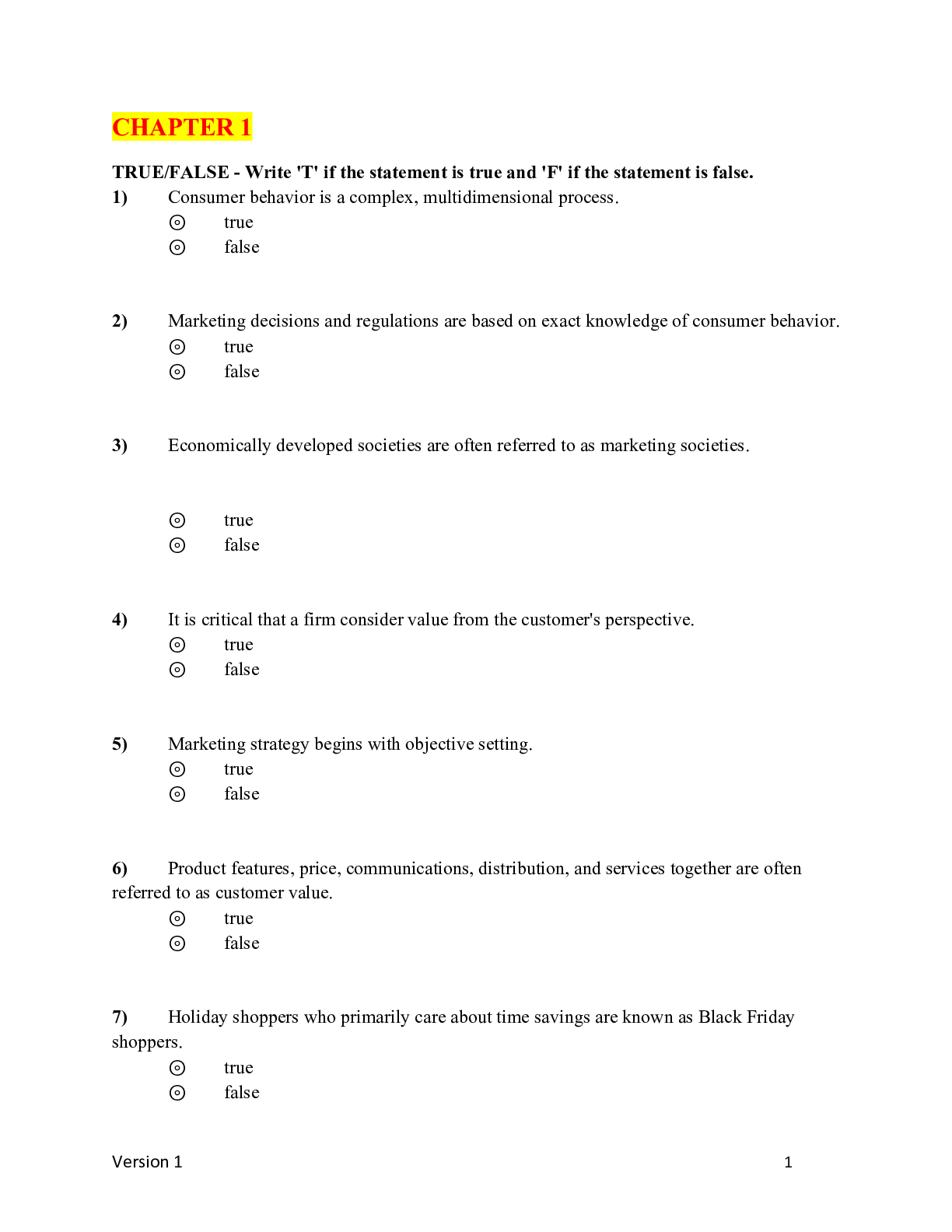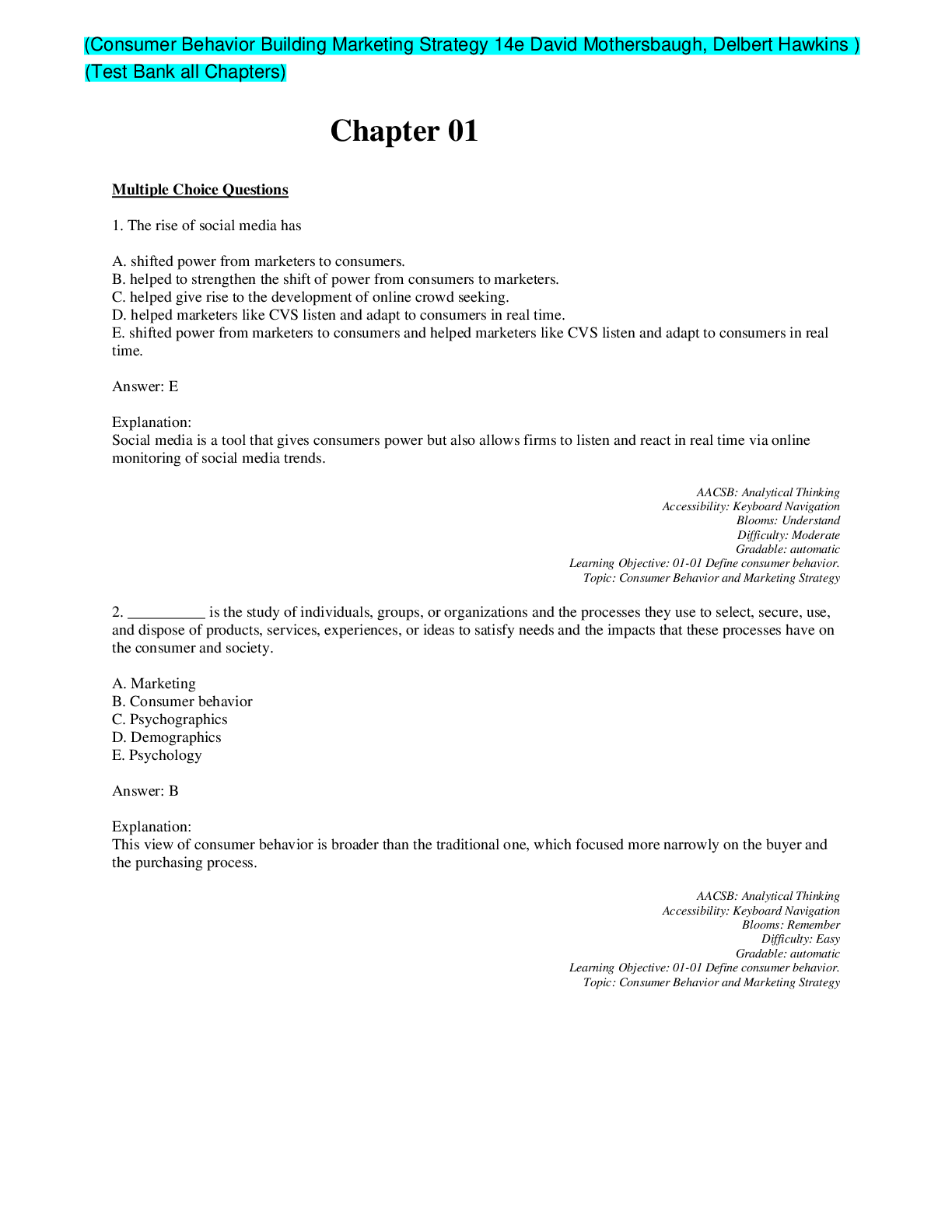Finance > TEST BANK > Corporate Finance, 3e (Berk/DeMarzo) Chapter 10 Capital Markets and the Pricing of Risk. TEST BANK (All)
Corporate Finance, 3e (Berk/DeMarzo) Chapter 10 Capital Markets and the Pricing of Risk. TEST BANK. (Answers Explained).
Document Content and Description Below
Corporate Finance, 3e (Berk/DeMarzo) Chapter 10 Capital Markets and the Pricing of Risk 10.1 Risk and Return: Insights from Years of Investor History 1) Which of the following investments o... ffered the lowest overall return over the past eighty years? A) Small stocks B) Treasury Bills C) S&P 500 D) Corporate bonds Section: 10.1 A First Look at Risk and Return Skill: Definition 2) Which of the following investments offered the highest overall return over the past eighty years? A) Treasury Bills B) S&P 500 C) Small stocks D) Corporate bonds Section: 10.1 A First Look at Risk and Return Skill: Definition 3) Which of the following investments had the largest fluctuations overall return over the past eighty years? A) Small stocks B) S&P 500 C) Corporate bonds D) Treasury Bills Section: 10.1 A First Look at Risk and Return Skill: Definition 10.2 Common Measures of Risk and Return 1) Which of the following statements is FALSE? A) The variance increases with the magnitude of the deviations from the mean. B) The variance is the expected squared deviation from the mean. C) Two common measures of the risk of a probability distribution are its variance and standard deviation. D) If the return is riskless and never deviates from its mean, the variance is equal to one. ) If the return is riskless and never deviates from its mean, the variance is equal to zero. Section: 10.2 Common Measures of Risk and Return Skill: Conceptual 2) Which of the following statements is FALSE? A) When an investment is risky, there are different returns it may earn. B) In finance, the variance of a return is also referred to as its volatility. C) The expected or mean return is calculated as a weighted average of the possible returns, where the weights correspond to the probabilities. D) The variance is a measure of how "spread out" the distribution of the return is. ) In finance, the standard deviation of a return is also referred to as its volatility. Section: 10.2 Common Measures of Risk and Return Skill: Conceptual 3) Which of the following statements is FALSE? A) The standard deviation is the square root of the variance. B) Because investors dislike only negative resolutions of uncertainty, alternative measures that focus solely on downside risk have been developed, such as the semi-variance and the expected tail loss. C) While the variance and the standard deviation are the most common measures of risk, they do not differentiate between upside and downside risk. D) While the variance and the standard deviation both measure the variability of the returns, the variance is easier to interpret because it is in the same units as the returns themselves. ) While the variance and the standard deviation both measure the variability of the returns, the standard deviation is easier to interpret because it is in the same units as the returns themselves. Section: 10.2 Common Measures of Risk and Return Skill: Conceptual 4) Which of the following equations is INCORRECT? A) Var(R) = B) SD(R) = C) Var(R) = PR × (R - E[R])2 D) E[R] = PR × R ) SD(R) = Section: 10.2 Common Measures of Risk and Return Skill: Conceptual Use the table for the question(s) below. Consider the following probability distribution of returns for Alpha Corporation: Current Stock Price ($) Stock Price in One Year ($) Return R Probability PR $35 40% 25% $25 $25 0% 50% $20 -20% 25% 5) The expected return for Alpha Corporation is closest to: A) 6.67% B) 5.00% C) 10% D) 0.00% ) E[R] = PR × R = .25(40%) + .50(0%) + .25(-20%) = 5% Section: 10.2 Common Measures of Risk and Return Skill: Analytical 6) The variance of the return on Alpha Corporation is closest to: A) 5.00% B) 4.75% C) 3.625% D) 3.75% ) E[R] = PR × R = .25(40%) + .50(0%) + .25(-20%) = 5% Var(R) = PR × (R - E[R])2 = .25(.40 - .05)2 + .50(.00 - .05)2 + .25(-20 - .05)2 = .0475 or 4.75% Section: 10.2 Common Measures of Risk and Return Skill: Analytical 7) The standard deviation of the return on Alpha Corporation is closest to: A) 22.4% B) 19.0% C) 21.8% D) 19.4% ) E[R] = PR × R = .25(40%) + .50(0%) + .25(-20%) = 5% Var(R) = PR × (R - E[R])2 = .25(.40 - .05)2 + .50(.00 - .05)2 + .25(-20 - .05)2 = .0475 or 4.75% SD(R) = = = .2179 or 21.79% Section: 10.2 Common Measures of Risk and Return Skill: Analytical 8) Suppose an investment is equally likely to have a 35% return or a - 20% return. The expected return for this investment is closest to: A) 7.5% B) 15% C) 5% D) 10% ) E[R] = PR × R = .50(35%) + .50(-20%) = 7.5% Section: 10.2 Common Measures of Risk and Return Skill: Analytical 9) Suppose an investment is equally likely to have a 35% return or a - 20% return. The variance on the return for this investment is closest to: A) .151 B) .0378 C) 0 D) .075 ) E[R] = PR × R = .50(35%) + .50(-20%) = 7.5% Var(R) = PR × (R - E[R])2 = .50(.35 - .075)2 + .50(-.20 - .075)2 = .07563 Section: 10.2 Common Measures of Risk and Return Skill: Analytical 10) Suppose an investment is equally likely to have a 35% return or a -20% return. The standard deviation on the return for this investment is closest to: A) 38.9% B) 0% C) 19.4% D) 27.5% ) E[R] = PR × R = .50(35%) + .50(-20%) = 7.5% Var(R) = PR × (R - E[R])2 = .50(.35 - .075)2 + .50(-.20 - .075)2 = .07563 Sdev = .07563(1/2) = .2750 Section: 10.2 Common Measures of Risk and Return Skill: Analytical 10.3 Historical Returns of Stocks and Bonds 1) Which of the following statements is FALSE? A) The expected return is the return is the return that actually occurs over a particular time period. B) If you hold the stock beyond the date of the first dividend, then to compute you return you must specify how you invest any dividends you receive in the interim. C) The average annual return of an investment during some historical period is simply the average of the realized returns for each year. D) The realized return is the total return we earn from dividends and capital gains, expressed as a percentage of the initial stock price. Section: 10.3 Historical Returns of Stocks and Bonds Skill: Definition 2) Which of the following statements is FALSE? A) We measure the degree of estimation error statistically through the standard error of the estimate. B) When focusing on the returns of a single security, its common practice to assume that all dividends are immediately invested at the risk-free rate. C) We estimate the standard deviation or volatility as the square root of the variance. D) We estimate the variance by computing the average squared deviation from the average realized return. Section: 10.3 Historical Returns of Stocks and Bonds Skill: Conceptual 3) Which of the following statements is FALSE? A) The standard error provides an indication of how far the sample average might deviate from the expected return. B) The 95% confidence interval for the expected return is defined as the Historical Average Return plus or minus three standard errors. C) We can use a security's historical average return to estimate its actual expected return. D) The standard error is the standard deviation of the average return. ) The 95% confidence interval for the expected return is defined as the Historical Average Return plus or minus two standard errors. Section: 10.3 Historical Returns of Stocks and Bonds Skill: Conceptual 4) Which of the following statements is FALSE? A) The compounded geometric average return is most often used for comparative purposes. B) We should use the arithmetic average return when we are trying to estimate an investment's expected return over a future horizon based on its past performance. C) The geometric average return will always be above the arithmetic average return and the difference grows with the volatility of the annual returns. D) The geometric average return is a better description of the long-run historical performance of an investment. ) The geometric average return will always be below the arithmetic average return and the difference grows with the volatility of the annual returns. Section: 10.3 Historical Returns of Stocks and Bonds Skill: Conceptual 5) If a stock pays dividends at the end of each quarter, with realized returns of R1, R2, R3, and R4 each quarter, then the annual realized return is calculated as: A) Rannual = B) Rannual = (1 + R1)(1 + R2)(1 + R3)(1 + R4) C) Rannual = (1 + R1)(1 + R2)(1 + R3)(1 + R4) - 1 D) Rannual = R1 + R2 + R3 + R4 Section: 10.3 Historical Returns of Stocks and Bonds Skill: Analytical Use the table for the question(s) below. Consider the following Price and Dividend data for General Electric Company: Date Price ($) Dividend ($) December 31, 2008 $14.64 January 26, 2009 $13.35 $0.10 April 28, 2009 $9.14 $0.10 July 29, 2009 $10.74 $0.10 October 28, 2009 $8.02 $0.10 December 30, 2009 $7.72 6) Assume that you purchased General Electric Company stock at the closing price on December 31, 2008 and sold it after the dividend had been paid at the closing price on January 26, 2009. Your dividend yield for this period is closest to: A) -8.15% B) 0.75% C) 0.70% D) -8.80% ) = div/P0 = .10/14.64 = .0068 Section: 10.3 Historical Returns of Stocks and Bonds Skill: Analytical 7) Assume that you purchased General Electric Company stock at the closing price on December 31, 2008 and sold it after the dividend had been paid at the closing price on January 26, 2009. Your capital gains rate (yield) for this period is closest to: A) 0.75% B) 0.70% C) -8.80% D) -8.15% ) = (P1 - P0)/P0 = (13.35 - 14.64)/14.64 = -.088115 Section: 10.3 Historical Returns of Stocks and Bonds Skill: Analytical 8) Assume that you purchased General Electric Company stock at the closing price on December 31, 2008 and sold it after the dividend had been paid at the closing price on January 26, 2009. Your total return rate (yield) for this period is closest to: A) 0.75% B) -8.80% C) 0.70% D) -8.15% ) = (P1 + D1 - P0)/P0 = (13.35 + .10 - 14.64)/14.64 = -.08128 Section: 10.3 Historical Returns of Stocks and Bonds Skill: Analytical 9) Assume that you purchased Ford Motor Company stock at the closing price on December 31, 2008 and sold it at the closing price on December 30, 2009. Your realized annual return for the year 2009 is closest to: A) -45.1% B) -44.5% C) -48.5% D) -47.3% ) Date Price ($) Dividend ($) Return (1 + return) December 31, 2008 $14.64 1 1 January 26, 2009 $13.35 $0.10 -8.13% 0.918716 0.918716 April 28, 2009 $9.14 $0.10 -30.79% 0.692135 0.635875 July 29, 2009 $10.74 $0.10 18.60% 1.185996 0.754145 October 28, 2009 $8.02 $0.10 -24.39% 0.756052 0.570173 December 30, 2009 $7.72 -3.74% 0.962594 0.548845 The Product of (1 + returns) - 1 = -0.45116 The last column in the table contains the cumulative product of (1 + returns) Section: 10.3 Historical Returns of Stocks and Bonds Skill: Analytical Use the table for the question(s) below. Consider the following realized annual returns: Year End Index Realized Return Stock A Realized Return 2000 23.6% 46.3% 2001 24.7% 26.7% 2002 30.5% 86.9% 2003 9.0% 23.1% 2004 -2.0% 0.2% 2005 -17.3% -3.2% 2006 -24.3% -27.0% 2007 32.2% 27.9% 2008 4.4% -5.1% 2009 7.4% -11.3% 10) The average annual return on the Index from 2000 to 2009 is closest to: A) 7.10% B) 4.00% C) 9.75% D) 8.75% ) Rannual = = = = 8.82% Section: 10.3 Historical Returns of Stocks and Bonds Skill: Analytical 11) The average annual return on Stock A from 2000 to 2009 is closest to: A) 29.9% B) 16.40% C) 18.2% D) 18.7% ) Rannual = = = = 16.45% Section: 10.3 Historical Returns of Stocks and Bonds Skill: Analytical 12) The variance of the returns on the Index from 2000 to 2009 is closest to: A) .0450 B) .3400 C) .1935 D) .0375 ) Rannual = = = = 8.8% Year End Index Realized Return (R - R) (R - R)2 2000 23.6% 14.78% 0.0218448 2001 24.7% 15.88% 0.0252174 2002 30.5% 21.68% 0.0470022 2003 9.0% 0.18% 3.24E-06 2004 -2.0% -10.82% 0.0117072 2005 -17.3% -26.12% 0.0682254 2006 -24.3% -33.12% 0.1096934 2007 32.2% 23.38% 0.0546624 2008 4.4% -4.42% 0.0019536 2009 7.4% -1.42% 0.0002016 Variance = SUM of (R - R)2/T - 1 = 0.3405116/9 = 0.0378346 Section: 10.3 Historical Returns of Stocks and Bonds Skill: Analytical 13) The variance of the returns on Stock A from 2000 to 2009 is closest to: A) .3145 B) .0990 C) .1100 D) .9890 ) Rannual = = = 16.45% Year End Stock A Realized Return (R - R) (R - R)2 2000 46.3% 29.85% 0.0891023 2001 26.7% 10.25% 0.0105063 2002 86.9% 70.45% 0.4963203 2003 23.1% 6.65% 0.0044223 2004 0.2% -16.25% 0.0264063 2005 -3.2% -19.65% 0.0386123 2006 -27.0% -43.45% 0.1887903 2007 27.9% 11.45% 0.0131103 2008 -5.1% -21.55% 0.0464403 2009 -11.3% -27.75% 0.0770063 Variance = SUM of (R - R)2/T - 1 = 0.9907165/9 = 0.1100796 Section: 10.3 Historical Returns of Stocks and Bonds Skill: Analytical 14) The standard deviation of the returns on the Index from 2000 to 2009 is closest to: A) 19.5% B) 20.5% C) 3.8% D) 8.8% ) Rannual = = = = 8.8% Year End Index Realized Return (R - R) (R - R)2 2000 23.6% 14.78% 0.0218448 2001 24.7% 15.88% 0.0252174 2002 30.5% 21.68% 0.0470022 2003 9.0% 0.18% 3.24E-06 2004 -2.0% -10.82% 0.0117072 2005 -17.3% -26.12% 0.0682254 2006 -24.3% -33.12% 0.1096934 2007 32.2% 23.38% 0.0546624 2008 4.4% -4.42% 0.0019536 2009 7.4% -1.42% 0.0002016 Variance = SUM of (R - R)2/T - 1 = 0.3405116/9 = 0.0378346 Standard deviation = = = 0.1945112 Section: 10.3 Historical Returns of Stocks and Bonds Skill: Analytical 15) The standard deviation of the returns on Stock A from 2000 to 2009 is closest to: A) 33.2% B) 16.4% C) 31.5% D) 11.0% ) Rannual = = = 16.45% Year End Stock A Realized Return (R - R) (R - R)2 2000 46.3% 29.85% 0.0891023 2001 26.7% 10.25% 0.0105063 2002 86.9% 70.45% 0.4963203 2003 23.1% 6.65% 0.0044223 2004 0.2% -16.25% 0.0264063 2005 -3.2% -19.65% 0.0386123 2006 -27.0% -43.45% 0.1887903 2007 27.9% 11.45% 0.0131103 2008 -5.1% -21.55% 0.0464403 2009 -11.3% -27.75% 0.0770063 Variance = SUM of( R - R)2/T - 1 = 0.9907165/9 = 0.1100796 Standard deviation = = = 0.3317825 Section: 10.3 Historical Returns of Stocks and Bonds Skill: Analytical 16) Suppose that you want to use the 10 year historical average return on the Index to forecast the expected future return on the Index. The standard error of your estimate of the expected return is closest to: A) 19.4% B) 3.8% C) 6.2% D) 1.95% ) Rannual = = = = 8.8% Year End Index Realized Return (R - R) (R - R)2 2000 23.6% 14.78% 0.0218448 2001 24.7% 15.88% 0.0252174 2002 30.5% 21.68% 0.0470022 2003 9.0% 0.18% 3.24E-06 2004 -2.0% -10.82% 0.0117072 2005 -17.3% -26.12% 0.0682254 2006 -24.3% -33.12% 0.1096934 2007 32.2% 23.38% 0.0546624 2008 4.4% -4.42% 0.0019536 2009 7.4% -1.42% 0.0002016 Variance = SUM of (R - R)2/T - 1 = 0.3405116/9 = 0.0378346 Standard deviation = = = 0.1945112 Standard error = Standard Deviation/ = 0.1945112/ = 0.0615 or 6.15% Section: 10.3 Historical Returns of Stocks and Bonds Skill: Analytical 17) Suppose that you want to use the 10 year historical average return on Stock A to forecast the expected future return on Stock A. The standard error of your estimate of the expected return is closest to: A) 16.4% B) 3.32% C) 10.49% D) 33.20% ) Rannual = = = 16.45% Year End Stock A Realized Return (R - R) (R - R)2 2000 46.3% 29.85% 0.0891023 2001 26.7% 10.25% 0.0105063 2002 86.9% 70.45% 0.4963203 2003 23.1% 6.65% 0.0044223 2004 0.2% -16.25% 0.0264063 2005 -3.2% -19.65% 0.0386123 2006 -27.0% -43.45% 0.1887903 2007 27.9% 11.45% 0.0131103 2008 -5.1% -21.55% 0.0464403 2009 -11.3% -27.75% 0.0770063 Variance = SUM of (R - R)2/T - 1 = 0.9907165/9 = 0.1100796 Standard deviation = = = 0.3317825 Standard error = Standard Deviation/ = 0.3317825/ = 0.1049 or 10.49% Section: 10.3 Historical Returns of Stocks and Bonds Skill: Analytical 18) Suppose that you want to use the 10 year historical average return on the Index to forecast the expected future return on the Index. The 95% confidence interval for your estimate of the expect return is closest to: A) -9.6% to 27.3% B) 6.8% to 10.7% C) -3.5% to 21.1% D) 4.9% to 12.7% ) Rannual = = = 8.8% Year End Index Realized Return (R - R) (R - R)2 2000 23.6% 14.78% 0.0218448 2001 24.7% 15.88% 0.0252174 2002 30.5% 21.68% 0.0470022 2003 9.0% 0.18% 3.24E-06 2004 -2.0% -10.82% 0.0117072 2005 -17.3% -26.12% 0.0682254 2006 -24.3% -33.12% 0.1096934 2007 32.2% 23.38% 0.0546624 2008 4.4% -4.42% 0.0019536 2009 7.4% -1.42% 0.0002016 Variance = SUM of (R - R)2/T - 1 = 0.3405116/9 = 0.0378346 Standard deviation = = = 0.1945112 Standard error = Standard Deviation/ = 0.1945112/ = 0.0615 or 6.15% 95% Confidence Interval = mean return + or - 2 standard errors, so lower bound = .0878 - 2 × 0.0615 = -3.5% upper bound = .0878 + 2 × 0.0615 = 21.1% Section: 10.3 Historical Returns of Stocks and Bonds Skill: Analytical 19) Suppose that you want to use the 10 year historical average return on Stock A to forecast the expected future return on Stock A. The 95% confidence interval for your estimate of the expect return is closest to: A) 13.2% to 19.5% B) -4.5% to 37.4% C) 6.5% to 26.3% D) -15.0% to 47.9% ) Rannual = = = 16.45% Year End Stock A Realized Return (R - R) (R - R)2 2000 46.3% 29.85% 0.0891023 2001 26.7% 10.25% 0.0105063 2002 86.9% 70.45% 0.4963203 2003 23.1% 6.65% 0.0044223 2004 0.2% -16.25% 0.0264063 2005 -3.2% -19.65% 0.0386123 2006 -27.0% -43.45% 0.1887903 2007 27.9% 11.45% 0.0131103 2008 -5.1% -21.55% 0.0464403 2009 -11.3% -27.75% 0.0770063 Variance = SUM of (R - R)2/T - 1 = 0.9907165/9 = 0.1100796 Standard deviation = = = 0.3317825 Standard error = Standard Deviation/ = 0.3317825/ = 0.1049 or 10.49% 95% Confidence Interval = mean return + or - 2 standard errors, so lower bound = .1638 - 2 × 0.1049= -4.5% upper bound = .1638 + 2 × 0.1049 = 37.4% Section: 10.3 Historical Returns of Stocks and Bonds Skill: Analytical 20) The geometric average annual return on the Index from 2000 to 2009 is closest to: A) 9.75% B) 8.75% C) 7.10% D) 8.35% ) Geometric Average = - 1 = - 1 = 1.071067 - 1 = 0.071067 Section: 10.3 Historical Returns of Stocks and Bonds Skill: Analytical 21) The geometric average annual return on Stock A from 2000 to 2009 is closest to: A) 12.4% B) 16.7% C) 13.2% D) 17.8% ) Geometric Average = - 1 = - 1 = 1.124476 - 1 = 0.124476 Section: 10.3 Historical Returns of Stocks and Bonds Skill: Analytical Use the table for the question(s) below. Consider the following Price and Dividend data for J. P. Morgan Chase: Date Price ($) Dividend ($) December 31, 2008 $40.06 February 9, 2009 $36.80 $0.50 May 7, 2009 $30.41 $0.50 August 10, 2009 $34.86 $0.50 November 8, 2009 $25.86 $0.50 December 30, 2009 $18.86 22) Assume that you purchased J. P. Morgan Chase stock at the closing price on December 31, 2008 and sold it at the closing price on December 30, 2009. Calculate your realized annual return is for the year 2005. Answer: Date Price ($) Dividend ($) Return (1 + return) December 31, 2008 $40.06 0.00% 1 1 January 26, 2009 $36.80 $0.50 -6.89% 0.931103 0.931103 April 28, 2009 $30.41 $0.50 -16.01% 0.839946 0.782076 July 29, 2009 $34.86 $0.50 16.28% 1.162775 0.909379 October 28, 2009 $25.86 $0.50 -24.38% 0.756168 0.687643 December 30, 2009 $18.86 -27.07% 0.729312 0.501506 The Product of (1 + returns) - 1 = -0.49849 The last column in the table contains the cumulative product of (1 + returns) Section: 10.3 Historical Returns of Stocks and Bonds Skill: Analytical Use the table for the question(s) below. Consider the following realized annual returns: Year End Market Realized Return Stock B Realized Return 2000 21.2% 88.3% 2001 30.3% 56.4% 2002 22.3% 114.6% 2003 25.3% 68.4% 2004 -11.0% -62.8% 2005 -11.3% 52.7% 2006 -20.8% -22.0% 2007 33.1% 6.9% 2008 13.0% 9.2% 2009 7.3% -0.9% 23) Suppose that you want to use the 10 year historical average return on the Market to forecast the expected future return on the Market. Calculate the 95% confidence interval for your estimate of the expect return. Answer: Rannual = = = 10.93% Year End Market Realized Return (R - R) (R - R)2 2000 21.2% 10.23% 0.0104625 2001 30.3% 19.40% 0.03763 2002 22.3% 11.35% 0.0128899 2003 25.3% 14.32% 0.0205182 2004 -11.0% -21.98% 0.0483043 2005 -11.3% -22.20% 0.0492984 2006 -20.8% -31.78% 0.1009717 2007 33.1% 22.21% 0.0493349 2008 13.0% 2.07% 0.0004274 2009 7.3% -3.63% 0.0013148 Variance = SUM of (R - R)2/(T - 1) = 0.3311521/9 = 0.0367947 Standard deviation = = = 0.1916972 Standard error = Standard Deviation/ = .1916972/ = 0.06062 or 6.062% 95% Confidence Interval = mean return + or - 2 standard errors, so lower bound = 0.1093-2*0.060 = -0.012 or -1.2% upper bound = .1093 + 2 × 0.060 = 0.231 or 23.1% Section: 10.3 Historical Returns of Stocks and Bonds Skill: Analytical 24) Suppose that you want to use the 10 year historical average return on Stock B to forecast the expected future return on Stock B. Calculate the 95% confidence interval for your estimate of the expect return. Answer: Rannual = = = 31.1% Year End Stock B Realized Return (R - R) (R - R)2 2000 88.3% 57.24% 0.3276925 2001 56.4% 25.36% 0.0642878 2002 114.6% 83.53% 0.6977065 2003 68.4% 37.29% 0.1390502 2004 -62.8% -93.92% 0.8821468 2005 52.7% 21.66% 0.0469291 2006 -22.0% -53.04% 0.281292 2007 6.9% -24.19% 0.058501 2008 9.2% -21.92% 0.0480275 2009 -0.9% -32.02% 0.1025221 Variance = SUM of (R - R)2/T - 1 = 2.6481554/9 = 0.29409 Standard deviation = = = 0.542301 Standard error = Standard Deviation/ = 0.542301/ = 0.17149 or 17.149% 95% Confidence Interval = mean return + or - 2 standard errors, so lower bound = .311 - 2 × 0.17149 = -0.204 or -20.4% upper bound = .311 + 2 × 0.17149 = 0.825 or 82.5% Section: 10.3 Historical Returns of Stocks and Bonds Skill: Analytical 25) Using the data provided in the table, calculate the average annual return, the variance of the annual returns, and the standard deviation of the average returns for the market from 2000 to 2009. Answer: Rannual = = = 10.93% Year End Market Realized Return (R - R) (R - R)2 2000 21.2% 10.23% 0.0104625 2001 30.3% 19.40% 0.03763 2002 22.3% 11.35% 0.0128899 2003 25.3% 14.32% 0.0205182 2004 -11.0% -21.98% 0.0483043 2005 -11.3% -22.20% 0.0492984 2006 -20.8% -31.78% 0.1009717 2007 33.1% 22.21% 0.0493349 2008 13.0% 2.07% 0.0004274 2009 7.3% -3.63% 0.0013148 Variance = SUM of (R - R)2/T - 1 = 0.3311521/9 = 0.0367947 Standard deviation = = = 0.1918194 Section: 10.3 Historical Returns of Stocks and Bonds Skill: Analytical 26) Using the data provided in the table, calculate the average annual return, the variance of the annual returns, and the standard deviation of the average returns for Stock B from 2000 to 2009. Answer: Rannual = = = 31.1% Year End Stock B Realized Return (R - R) (R - R)2 2000 88.3% 57.24% 0.3276925 2001 56.4% 25.36% 0.0642878 2002 114.6% 83.53% 0.6977065 2003 68.4% 37.29% 0.1390502 2004 -62.8% -93.92% 0.8821468 2005 52.7% 21.66% 0.0469291 2006 -22.0% -53.04% 0.281292 2007 6.9% -24.19% 0.058501 2008 9.2% -21.92% 0.0480275 2009 -0.9% -32.02% 0.1025221 Variance = SUM of (R - R)2/T -1 = 2.6481554/9 = 0.2942395 Standard deviation = = = 0.5424385 Section: 10.3 Historical Returns of Stocks and Bonds Skill: Analytical 10.4 The Historical Tradeoff Between Risk and Return 1) The excess return if the difference between the average return on a security and the average return for: A) Treasury Bonds. B) a portfolio of securities with similar risk. C) a broad based market portfolio like the S&P 500 index. D) Treasury Bills. Section: 10.4 The Historical Tradeoff Between Risk and Return Skill: Definition 2) Which of the following statements is FALSE? A) Expected return should rise proportionately with volatility. B) Investors would not choose to hold a portfolio that is more volatile unless they expected to earn a higher return. C) Smaller stocks have lower volatility than larger stocks. D) The largest stocks are typically more volatile than a portfolio of large stocks. ) Smaller stocks have higher volatility than larger stocks. Section: 10.4 The Historical Tradeoff Between Risk and Return Skill: Conceptual 3) Which of the following statements is FALSE? A) Investments with higher volatility have rewarded investors with higher average returns. B) Investments with higher volatility should have a higher risk premium and therefore higher returns. C) Volatility seems to be a reasonable measure of risk when evaluating returns on large portfolios and the returns of individual securities. D) Riskier investments must offer investors higher average returns to compensate them for the extra risk they are taking on. Section: 10.4 The Historical Tradeoff Between Risk and Return Skill: Conceptual Use the table for the question(s) below. Consider the following average annual returns: Investment Average Return Small Stocks 23.2% S&P 500 13.2% Corporate Bonds 7.5% Treasury Bonds 6.2% Treasury Bills 4.8% 4) What is the excess return for the portfolio of small stocks? A) 10.0% B) 15.7% C) 18.4% D) 17.0% ) Investment Average Return Average Return - Tbill Return Small Stocks 23.2% 18.40% S&P 500 13.2% 8.40% Corporate Bonds 7.5% 2.70% Treasury Bonds 6.2% 1.40% Treasury Bills 4.8% 0.0% Section: 10.4 The Historical Tradeoff Between Risk and Return Skill: Analytical 5) What is the excess return for the S&P 500? A) 5.7% B) 7.0% C) 0% D) 8.4% ) Investment Average Return Average Return - Tbill Return Small Stocks 23.2% 18.40% S&P 500 13.2% 8.40% Corporate Bonds 7.5% 2.70% Treasury Bonds 6.2% 1.40% Treasury Bills 4.8% Section: 10.4 The Historical Tradeoff Between Risk and Return Skill: Analytical 6) What is the excess return for corporate bonds? A) 2.7% B) 1.3% C) -5.7% D) 0% ) Investment Average Return Average Return - Tbill Return Small Stocks 23.2% 18.40% S&P 500 13.2% 8.40% Corporate Bonds 7.5% 2.70% Treasury Bonds 6.2% 1.40% Treasury Bills 4.8% Section: 10.4 The Historical Tradeoff Between Risk and Return Skill: Analytical 7) What is the excess return for Treasury Bills? A) 0% B) -8.4% C) -2.7% D) -1.4% ) Investment Average Return Average Return - Tbill Return Small Stocks 23.2% 18.40% S&P 500 13.2% 8.40% Corporate Bonds 7.5% 2.70% Treasury Bonds 6.2% 1.40% Treasury Bills 4.8% 0.00% Section: 10.4 The Historical Tradeoff Between Risk and Return Skill: Analytical 8) Do expected returns for individual stocks increase proportionately with volatility? Answer: No, although there is a proportional relationship with large portfolios of stocks, this relationship doesn't hold for individual securities. Section: 10.4 The Historical Tradeoff Between Risk and Return Skill: Conceptual 10.5 Common Versus Independent Risk 1) Common risk is also called: A) diversifiable risk. B) correlated risk. C) uncorrelated risk. D) independent risk. Section: 10.5 Common Versus Independent Risk Skill: Definition Use the following information to answer the problems below. Consider two banks. Bank A has 1000 loans outstanding each for $100,000, that it expects to be fully repaid today. Each of Bank A's loans have a 6% probability of default, in which case the bank will receive $0 for each of the defaulting loans. Bank B has 100 loans of $1 million outstanding, which it also expects to be fully repaid today. Each of Bank B's loans have a 5% probability of default, in which case the bank will receive $0 for each of the defaulting loans. The chance of default is independent across all the loans. 2) The expected overall payoff to Bank A is: A) $5,000,000 B) $6,000,000 C) $94,000,000 D) $95,000,000 ) E[payoff] = (.06)(1000)($0) + (1 - .06)(1000)($100,000) = $94,000,000 Section: 10.5 Common Versus Independent Risk Skill: Analytical 3) The expected overall payoff to Bank B is: A) $5,000,000 B) $6,000,000 C) $94,000,000 D) $95,000,000 ) E[payoff] = (.05)(100)($0) + (1 - .05)(100)($1,000,000,000) = $95,000,000 Section: 10.5 Common Versus Independent Risk Skill: Analytical 4) The standard deviation of the overall payoff to Bank A is closest to: A) $689,000 B) $751,000 C) $2,179,000 D) $2,375,000 ) E[payoff] = (.06)(1000)($0) + (1 - .06)(1000)($100,000) = $94,000,000 SD(Payoff) = = 23.748684 million SD(Overall Payoff) = = $750,999.33 Section: 10.5 Common Versus Independent Risk Skill: Analytical 5) The standard deviation of the overall payoff to Bank B is closest to: A) $751,000 B) $2,179,000 C) $2,375,000 D) $21,794,000 ) E[payoff] = (.05)(100)($0) + (1 - .05)(100)($1,000,000) = $95,000,000 SD(Payoff) = = 21.794495 million SD(Overall Payoff) = = $2,179,450 Section: 10.5 Common Versus Independent Risk Skill: Analytical Use the information for the question(s) below. Big Cure and Little Cure are both pharmaceutical companies. Big Cure presently has a potential "blockbuster" drug before the Food and Drug Administration (FDA) waiting for approval. If approved, Big Cure's blockbuster drug will produce $1 billion in net income for Big Cure. Little Cure has 10 separate less important drugs before the FDA waiting for approval. If approved, each of Little Cure's drugs would produce $100 million in net income for Little Cure. The probability of the FDA approving a drug is 50%. 6) What is the expected payoff for Big Cure's Blockbuster drug? A) $100 million B) $0 C) $1 billion D) $500 million ) expected payoff = prob of payoff × amount if successful = .5 × $1 billion = $500 million Section: 10.5 Common Versus Independent Risk Skill: Analytical 7) What is the expected payoff for Little Cure's ten drugs? A) $500 million B) $100 million C) $1 billion D) $0 ) expected payoff = prob of payoff × amount if successful = .5 × $100 = $50 million for each drug $50 million × 10 drugs = $500 million Section: 10.5 Common Versus Independent Risk Skill: Analytical 8) What is the standard deviation of Big Cure's average net income for their new blockbuster drug? A) $0 B) $1 billion C) $100 million D) $500 million ) expected payoff = prob of payoff × amount if successful = .5 × $1 billion = $500 million Standard deviation = = 500 million Section: 10.5 Common Versus Independent Risk Skill: Analytical 9) The standard deviation of Little Cure's average net income for their ten new drugs is closest to: A) $50 million B) $25 million C) $16 million D) $500 million ) expected payoff = prob of payoff × amount if successful = .5 × $1 billion = $500 million Standard deviation for one drug= = 50 million Standard deviation(all drugs) = SD(one drug)/ = 50/ = 15.81 million Section: 10.5 Common Versus Independent Risk Skill: Analytical 10) Which pharmaceutical company faces less risk? Answer: Little Cure, because it has a lower standard deviation of expected net income. Big Cure expected payoff = prob of payoff × amount if successful = .5 × $1 billion = $500 million Standard deviation = = 500 million Little Cure expected payoff = prob of payoff × amount if successful = .5 × $1 billion = $500 million Standard deviation for one drug= = 50 million Standard deviation(all drugs) = SD(one drug)/ = 50/ = 15.81 million Section: 10.5 Common Versus Independent Risk Skill: Analytical 10.6 Diversification in Stock Portfolios 1) Which of the following is NOT a diversifiable risk? A) The risk that oil prices rise, increasing production costs B) The risk of a product liability lawsuit C) The risk that the CEO is killed in a plane crash D) The risk of a key employee being hired away by a competitor Section: 10.6 Diversification in Stock Portfolios Skill: Conceptual 2) Which of the following is NOT a systematic risk? A) The risk that oil prices rise, increasing production costs B) The risk that the Federal Reserve raises interest rates C) The risk that the economy slows, reducing demand for your firm's products D) The risk that your new product will not receive regulatory approval Section: 10.6 Diversification in Stock Portfolios Skill: Conceptual 3) Which of the following types of risk doesn't belong? A) Market risk B) Unique risk C) Idiosyncratic risk D) Unsystematic risk Section: 10.6 Diversification in Stock Portfolios Skill: Definition 4) Which of the following types of risk doesn't belong? A) Idiosyncratic risk B) Undiversifiable risk C) Market risk D) Systematic risk Section: 10.6 Diversification in Stock Portfolios Skill: Definition 5) Which of the following statements is FALSE? A) Firm specific news is good or bad news about the company itself. B) Firms are affected by both systematic and firm-specific risk. C) When firms carry both types of risk, only the firm-specific risk will be diversified when we combine many firms' stocks into a portfolio. D) The risk premium for a stock is affected by its idiosyncratic risk. ) The risk premium for a stock is affected by its systematic risk. Section: 10.6 Diversification in Stock Portfolios Skill: Conceptual 6) Which of the following statements is FALSE? A) Because investors are risk averse, they will demand a risk premium to hold unsystematic risk. B) Over any given period, the risk of holding a stock is that the dividends plus the final stock price will be higher or lower than expected, which makes the realized return risky. C) The risk premium for diversifiable risk is zero, so investors are not compensated for holding firm-specific risk. D) Because investors can eliminate firm-specific risk "for free" by diversifying their portfolios, they will not require a reward or risk premium for holding it. ) Because investors are risk averse, they will demand a risk premium to hold systematic risk. Section: 10.6 Diversification in Stock Portfolios Skill: Conceptual 7) Which of the following statements is FALSE? A) Fluctuations of a stock's returns that are due to firm-specific news are common risks. B) The volatility in a large portfolio will decline until only the systematic risk remains. C) When we combine many stocks in a large portfolio, the firm-specific risks for each stock will average out and be diversified. D) The risk premium of a security is determined by its systematic risk and does not depend on its diversifiable risk. ) Fluctuations of a stock's returns that are due to firm-specific news are not common risks. Section: 10.6 Diversification in Stock Portfolios Skill: Conceptual 8) Consider a portfolio that consists of an equal investment in 20 firms. For each of these firms, there is a 70% probability that the firms will have a 16% return and a 30% that they will have a - 8% return. Each of these firms' returns is independent of all others. The standard deviation of this portfolio is closest to: A) 2.5% B) 4.2% C) 8.8% D) 11.0% ) E[return] = (.70)(16%) + (.30)(-8%) = 8.8% SD(Rt) = = 10.9982% SD(Rportfolio) = = 2.459268% Section: 10.6 Diversification in Stock Portfolios Skill: Analytical Use the information for the question(s) below. Consider an economy with two types of firms, S and I. S firms always move together, but I firms move independently of each other. For both types of firm there is a 70% probability that the firm will have a 20% return and a 30% probability that the firm will have a -30% return. 9) What is the expected return for an individual firm? A) 14% B) 3% C) 5% D) -5% ) expected return = .7(20%) + .3(-30%) = 5% Section: 10.6 Diversification in Stock Portfolios Skill: Analytical 10) The standard deviation for the return on an individual firm is closest to: A) 23.0% B) 5.25% C) 15.0% D) 10.0% ) expected return = .7(20%) + .3(-30%) = 5% standard deviation = = .2291 Section: 10.6 Diversification in Stock Portfolios Skill: Analytical 11) The standard deviation for the return on a portfolio of 20 type S firms is closest to: A) 5.10% B) 23.0% C) 15.0% D) 5.25% ) expected return = .7(20%) + .3(-30%) = 5% standard deviation = = .2291 Since all these firms move the same, there is no adjustment to the standard deviation. Section: 10.6 Diversification in Stock Portfolios Skill: Analytical 12) The standard deviation for the return on an portfolio of 20 type I firms is closest to: A) 5.25% B) 5.10% C) 15.0% D) 23.0% ) expected return = .7(20%) + .3(-30%) = 5% standard deviation = = .2291 Since all these firms move independently stdev = stdev(single firm)/ = .2291/ = .0512 Section: 10.6 Diversification in Stock Portfolios Skill: Analytical 10.7 Measuring Systematic Risk Use the following information to answer the question(s) below. Suppose that the market portfolio is equally likely to increase by 24% or decrease by 8%. Security "X" goes up on average by 29% when the market goes up and goes down by 11% when the market goes down. Security "Y" goes down on average by 16% when the market goes up and goes up by 16% when the market goes down. Security "Z" goes up on average by 4% when the market goes up and goes up by 4% when the market goes down. 1) The beta for security "X" is closest to: A) 0 B) 0.80 C) 1.00 D) 1.25 ) Change in Market = 24% - (-8%) = 32%, change in security = 29% - (-11%) = 40%, Beta = 40%/32% = 1.25 Section: 10.7 Measuring Systematic Risk Skill: Analytical 2) The beta for security "Y" is closest to: A) -1.00 B) -0.25 C) 0.00 D) 0.25 ) Change in Market = 24% - (-8%) = 32%, change in security = -16% - (16%) = -32%, Beta = -32%/32% = -1.00 Section: 10.7 Measuring Systematic Risk Skill: Analytical 3) The beta for security "Z" is closest to: A) -1.00 B) -0.25 C) 0.00 D) 0.25 ) Change in Market = 24% - (-8%) = 32%, change in security = 4% - (4%) = 0%, Beta = 0%/32% = 0 Section: 10.7 Measuring Systematic Risk Skill: Analytical 4) The risk-free rate is closest to: A) 0% B) 4% C) 8% D) 16% ) Security "Z" is the risk-free asset since its return is constant regardless of the market. Therefore the risk-free rate is the return on security Z which is 4%. Section: 10.7 Measuring Systematic Risk Skill: Analytical 5) The expected return on the market portfolio is closest to: A) 0% B) 4% C) 8% D) 16% ) .50(24%) + .50(-8%) = 8% Section: 10.7 Measuring Systematic Risk Skill: Analytical 6) The expected return on security "Y" is closest to: A) 0% B) 4% C) 10% D) 15% ) .50(-16%) + .50(.16%) = 0% Section: 10.7 Measuring Systematic Risk Skill: Analytical 7) The expected return on security with a beta of 0.8 is closest to: A) 0.0% B) 3.2% C) 6.4% D) 7.2% ) Security "Z" is the risk-free asset since its return is constant regardless of the market. Therefore the risk-free rate is the return on security Z which is 4%. The expected return on the market rate is .50(24%) + .50(-8%) = 8%. Using the CAPM, the return on this security is .04 + 0.8(.08 -.04) = 7.2% Section: 10.7 Measuring Systematic Risk Skill: Analytical 8) The expected return on security with a beta of 1.2 is closest to: A) 4.8% B) 8.0% C) 8.8% D) 9.6% ) Security "Z" is the risk-free asset since its return is constant regardless of the market. Therefore the risk-free rate is the return on security Z which is 4%. The expected return on the market rate is .50(24%) + .50(-8%) = 8%. Using the CAPM, the return on this security is .04 + 1.2(.08 -.04) = 8.8% Section: 10.7 Measuring Systematic Risk Skill: Analytical 9) The expected return on security with a beta of 0 is closest to: A) -4.0% B) 0.0% C) 3.2% D) 4.0% ) Security "Z" is the risk-free asset since its return is constant regardless of the market. Therefore the risk-free rate is the return on security Z which is 4%. The expected return on the market rate is .50(24%) + .50(-8%) = 8%. Using the CAPM, the return on this security is .04 + 0(.08 -.04) = 4.0% Section: 10.7 Measuring Systematic Risk Skill: Analytical 10) The expected return on security with a beta of 1 is closest to: A) -4.0% B) 3.2% C) 4.0% D) 8.0% ) Security "Z" is the risk-free asset since its return is constant regardless of the market. Therefore the risk-free rate is the return on security Z which is 4%. The expected return on the market rate is .50(24%) + .50(-8%) = 8%. Using the CAPM, the return on this security is .04 + 1(.08 -.04) = 8.0% Section: 10.7 Measuring Systematic Risk Skill: Analytical 11) Which of the following statements is FALSE? A) In exchange for bearing systematic risk, investors want to be compensated by earning a higher return. B) A key step to measuring systematic risk is finding a portfolio that contains only unsystematic risk. C) When evaluating the risk of an investment, an investor will care about its systematic risk, which cannot be eliminated through diversification. D) To measure the systematic risk of a stock, we must determine how much of the variability of its return is due to systematic, market-wide risks versus diversifiable, firm specific risks. ) A key step to measuring systematic risk is finding a portfolio that contains only systematic risk (the market portfolio). Section: 10.7 Measuring Systematic Risk Skill: Conceptual 12) Which of the following statements is FALSE? A) Beta differs from volatility. B) The risk premium investors can earn by holding the market portfolio is the difference between the market portfolio's expected return and the risk-free interest rate. C) Stocks in cyclical industries, in which revenues tend to vary greatly over the business cycle, are likely to be more sensitive to systematic risk and have higher betas than stocks in less sensitive industries. D) If we assume that the market portfolio (or the S&P 500) is efficient, then changes in the value of the market portfolio represent unsystematic shocks to the economy. ) If we assume that the market portfolio (or the S&P 500) is efficient, then changes in the value of the market portfolio represent systematic shocks to the economy. Section: 10.7 Measuring Systematic Risk Skill: Conceptual 13) Which of the following statements is FALSE? A) Beta measures the sensitivity of a security to market wide risk factors. B) Volatility measures total risk, while beta measures only systematic risk. C) The beta is the expected percentage change in the excess return of the market portfolio for a 1% change in the excess return of a security. D) Utilities tend to be stable and highly regulated, and thus are insensitive to fluctuations in the overall market. ) The beta is the expected percentage change in the excess return of a security for a 1% change in the excess return of the market portfolio. Section: 10.7 Measuring Systematic Risk Skill: Conceptual 14) Which of the following statements is FALSE? A) Because diversification improves with the number of stocks held in a portfolio an efficient portfolio should be a large portfolio containing many different stocks. B) The beta of a security is the sensitivity of the security's return to the return of the overall market. C) An efficient portfolio cannot be diversified further, that is there is no way to reduce the risk of the portfolio without lowering its expected return. D) We call a portfolio that contains only unsystematic risk an efficient portfolio. ) We call a portfolio that contains only systematic risk an efficient portfolio. Section: 10.7 Measuring Systematic Risk Skill: Conceptual Use the information for the question(s) below. Suppose the market portfolio's excess return tends to increase by 30% when the economy is strong and decline by 20% when the economy is weak. A type S firm has excess returns that increase by 45% when the economy is strong and decrease by 30% when the economy is weak. A type I firm will also have excess returns of either 45% or -30%, but the type I firm's excess returns will depend only upon firm-specific events and will be completely independent of the state of the economy. 15) What is the Beta for a type I firm? A) 1.0 B) 0.75 C) 0.0 D) 1.5 ) The systematic risk of the strength of the economy produces at 30% - -20% = 50% change in return for the market portfolio. The type I firm's return is independent of the economy as a whole so its change = 0% Beta = 0%/50% = 0 Section: 10.7 Measuring Systematic Risk Skill: Analytical 16) What is the Beta for a type S firm? A) 1.5 B) 0.0 C) 1.0 D) 0.75 ) The systematic risk of the strength of the economy produces at 30% - -20% = 50% change in return for the market portfolio. The type S firm's return changes by 45% - -30% = 75%, so Beta = 75%/50% = 1.5 Section: 10.7 Measuring Systematic Risk Skill: Analytical 10.8 Beta and the Cost of Capital Use the following information to answer the question(s) below. Company Ticker Beta Ford Motor Company F 2.77 International Business Machines IBM 0.73 Merck MRK 0.90 1) If the market risk premium is 6% and the risk-free rate is 4%, then the expected return of investing in Ford Motor Company is closest to: A) 10.0% B) 16.2% C) 17.1% D) 20.6% ) Return = .04 + 2.77(.06) = .2062 Section: 10.8 Beta and the Cost of Capital Skill: Analytical 2) If the market risk premium is 6% and the risk-free rate is 4%, then the expected return of investing in Merck is closest to: A) 5.4% B) 9.4% C) 10.0% D) 10.4% ) Return = .04 + 0.9(.06) = .094 Section: 10.8 Beta and the Cost of Capital Skill: Analytical 3) If the expected return on the market is 11% and the risk-free rate is 4%, then the expected return of investing in IBM is closest to: A) 9.1% B) 10.3% C) 11.0% D) 12.0% ) Return = .04 + 0.73 (.11 - .04) = .0911 Section: 10.8 Beta and the Cost of Capital Skill: Analytical 4) If the expected return on the market is 11% and the expected return of investing in Merck is 10.35%, then the risk-free rate must be: A) 3.0% B) 4.0% C) 4.5% D) 5.0% ) Return → .1035 = X + 0.9(.11 - X) → .1X = .1035 - .9(.11) → X = .045 Section: 10.8 Beta and the Cost of Capital Skill: Analytical 5) If the risk-free rate is 5% and the expected return of investing in Merck is 11.3%, then the expected return on the market must be: A) 8.0% B) 10.0% C) 10.4% D) 12.0% ) Return → .113 = .05 + 0.9(X - .05) → .9X = .113 - .05 + .045 → X = .12 Section: 10.8 Beta and the Cost of Capital Skill: Analytical 6) Suppose that Luther's beta is 0.9. If the market risk premium is 8% and the risk-free interest rate is 4%, then then expected return for Luther stock is? A) 7.6% B) 11.6% C) 11.2% D) 12.9% ) E[R] = Rf + Beta × Risk Premium = .04 + .9 × .08 = .112 Section: 10.8 Beta and the Cost of Capital Skill: Analytical 7) Suppose that KAN's beta is 1.5. If the market risk premium is 8% and the risk-free interest rate is 4%, then then expected return for KAN stock is? A) 8.0% B) 16.0% C) 13.5% D) 10.0% ) E[R] = Rf + Beta × Risk Premium = .04 + 1.5 × .08 = .16 Section: 10.8 Beta and the Cost of Capital Skill: Analytical 8) Suppose that Gold Digger's beta is -0.8. If the market risk premium is 8% and the risk-free interest rate is 4%, then the expected return for Gold Digger's stock is? A) -2.4% B) 4.8% C) 2.4% D) 10.4% ) E[R] = Rf + Beta × Risk Premium = .04 + -0.8 × .08 = -0.024 Section: 10.8 Beta and the Cost of Capital Skill: Analytical 9) Which of the following statements is FALSE? A) The Capital Asset Pricing Model is the most important method for estimating the cost of capital that is used in practice. B) Because the risk that determines expected returns is unsystematic risk, which is measured by beta, the cost of capital for an investment is the expected return available on securities with the same beta. C) A common assumption is that the project has the same risk as the firm. D) To determine a project's cost of capital we need to estimate its beta. ) Because the risk that determines expected returns is systematic risk, which is measured by beta, the cost of capital for an investment is the expected return available on securities with the same beta. Section: 10.8 Beta and the Cost of Capital Skill: Conceptual Use the information for the question(s) below. Suppose that in the coming year, you expect Exxon-Mobil stick to have a volatility of 42% and a beta of 0.9, and Merck's stock to have a volatility of 24% and a beta of 1.1. The risk free interest rate is 4% and the market's expected return is 12%. 10) Which stock has the highest total risk? A) Merck since it has a lower volatility B) Merck since it has a higher Beta C) Exxon-Mobil since it has a higher volatility D) Exxon-Mobil since it has a lower beta Section: 10.8 Beta and the Cost of Capital Skill: Conceptual 11) Which stock has the highest systematic risk? A) Merck since it has a higher Beta B) Exxon-Mobil since it has a lower beta C) Exxon-Mobil since it has a higher volatility D) Merck since it has a lower volatility Section: 10.8 Beta and the Cost of Capital Skill: Conceptual 12) The cost of capital for a project with the same beta as Exxon Mobil's stock is closest to: A) 11.6% B) 11.2% C) 12.8% D) 7.6% ) E[R] = Rf + Beta × Risk Premium = .04 + .9 × (.12 - .04) = .112 Section: 10.8 Beta and the Cost of Capital Skill: Analytical 13) The cost of capital for a project with the same beta as Merck's stock is closest to: A) 11.2% B) 12.8% C) 12.4% D) 11.6% ) E[R] = Rf + Beta × Risk Premium = .04 + 1.1 × (.12 - .04) = .128 Section: 10.8 Beta and the Cost of Capital Skill: Analytical 14) Which of the following is consistent with the CAPM and efficient capital markets? A) A security with a beta of 1 has a return last year of 8% when the market has a return of 12%. B) Small stocks with a beta of 1.5 tend to have higher returns on average than large stocks with a beta of 1.5. C) A security with only diversifiable risk has an expected return that exceeds the risk-free interest rate. D) A security with only systematic risk has an expected return that exceeds the risk-free interest rate. Section: 10.8 Beta and the Cost of Capital Skill: Conceptual 15) Which of the following statements is FALSE? A) If the market portfolio were not efficient, investors could find strategies that would "beat the market" with higher average returns and lower risk. B) The CAPM states that the cost of capital depends only on systematic risk. C) Efficient capital markets is a much stronger hypothesis than the CAPM. D) The market portfolio is an efficient portfolio. Section: 10.8 Beta and the Cost of Capital Skill: Conceptual 16) What is the market portfolio? Answer: The portfolio that contains all shares of all stocks and securities in the market is called the market portfolio. Section: 10.8 Beta and the Cost of Capital Skill: Definition [Show More]
Last updated: 11 months ago
Preview 1 out of 38 pages
.png)
Reviews( 0 )
Document information
Connected school, study & course
About the document
Uploaded On
Jan 28, 2021
Number of pages
38
Written in
Additional information
This document has been written for:
Uploaded
Jan 28, 2021
Downloads
0
Views
79
.png)

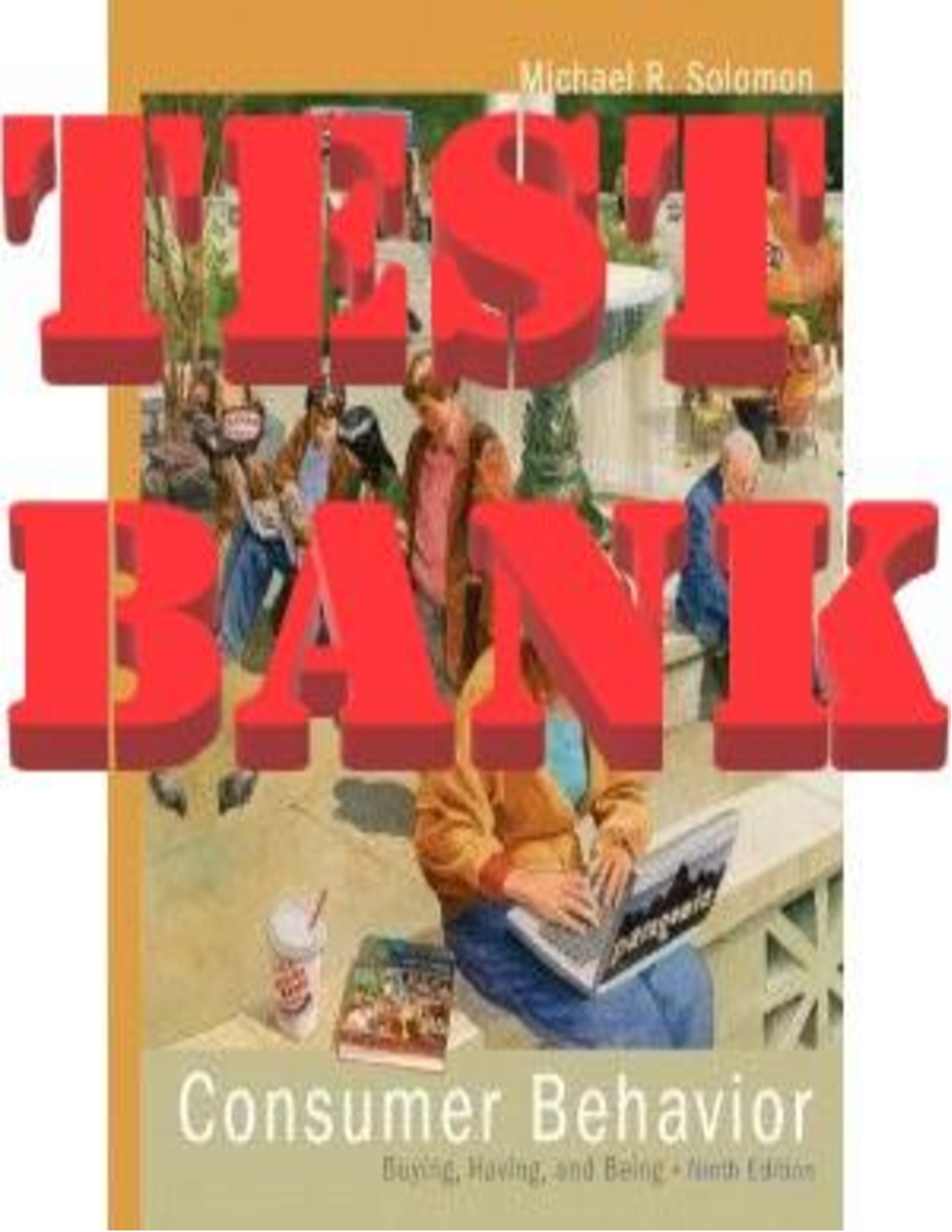
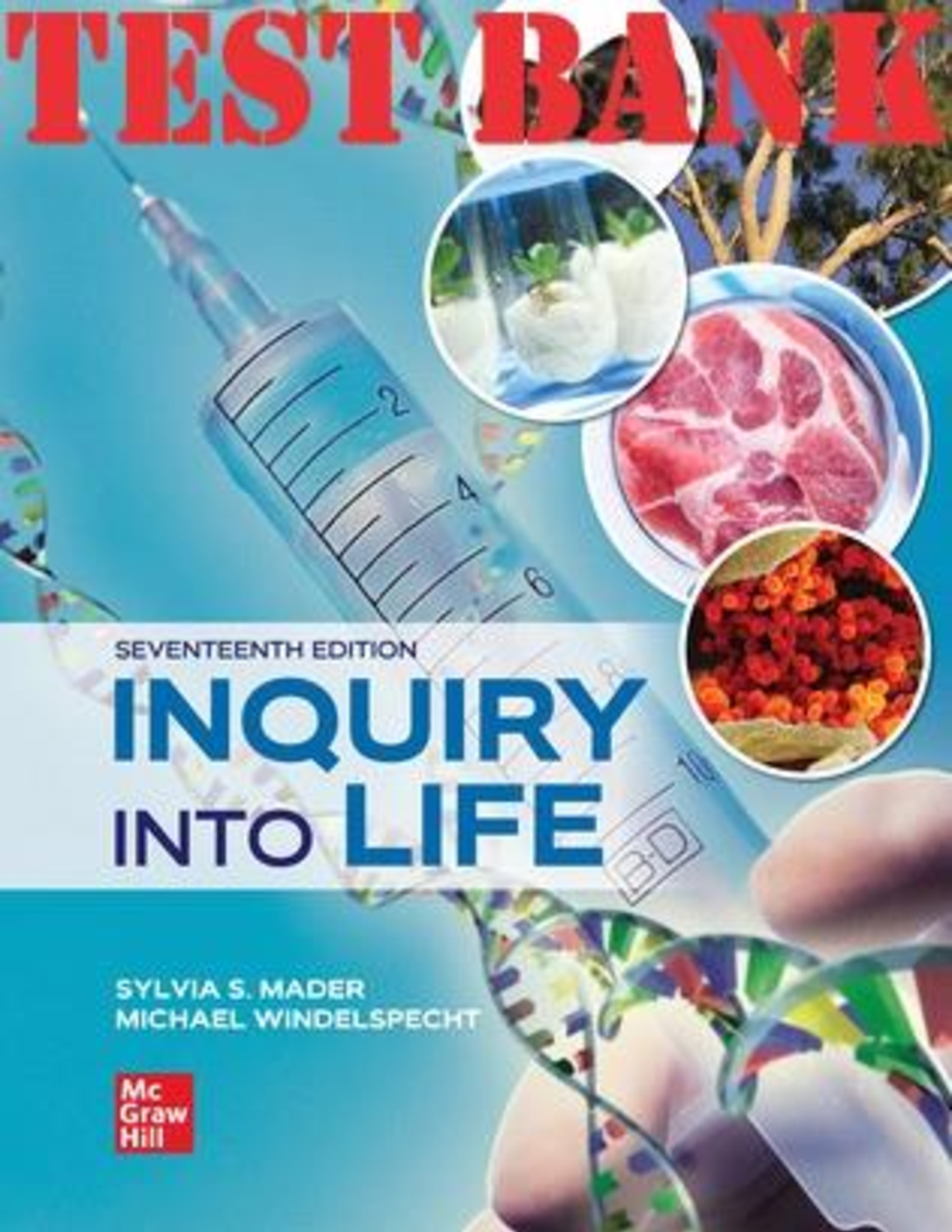

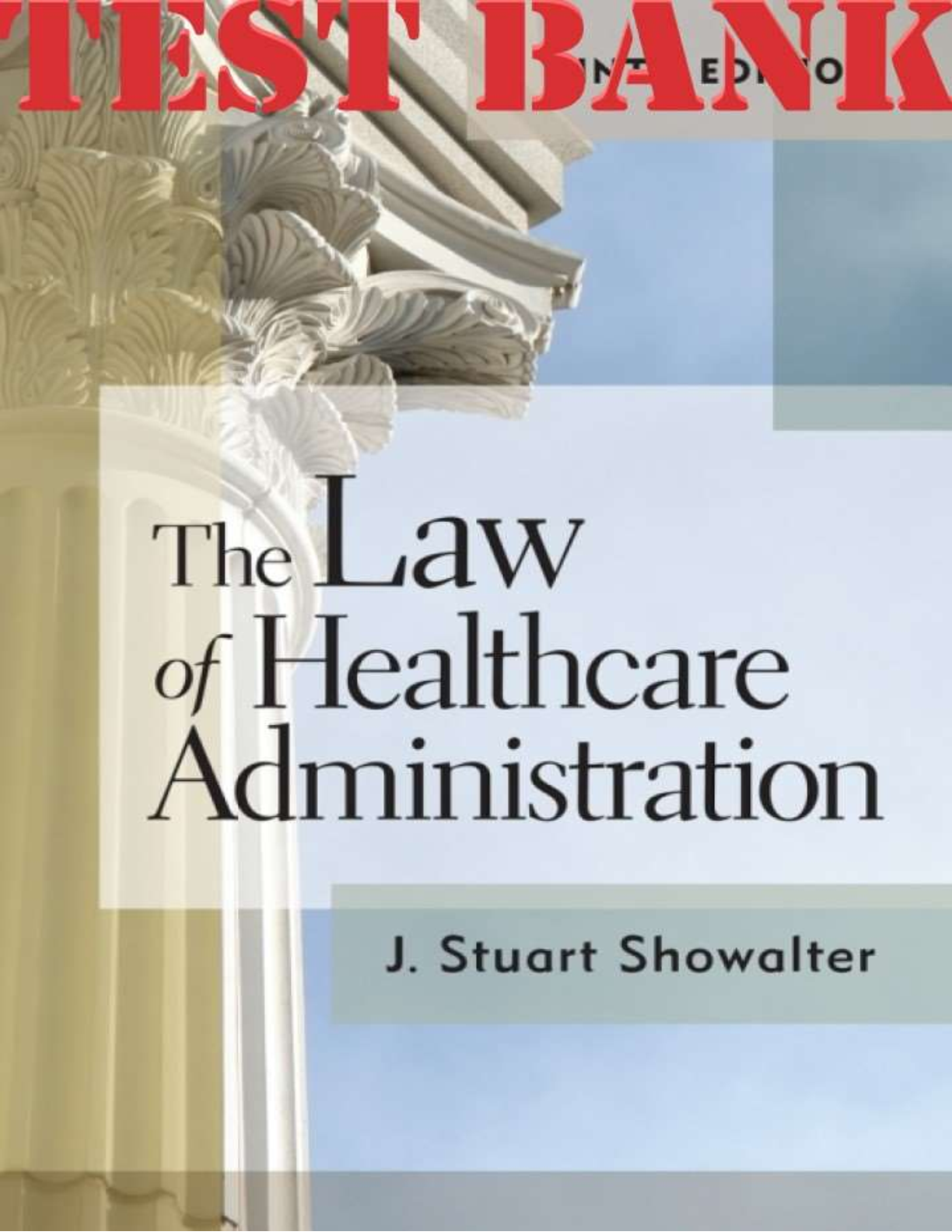

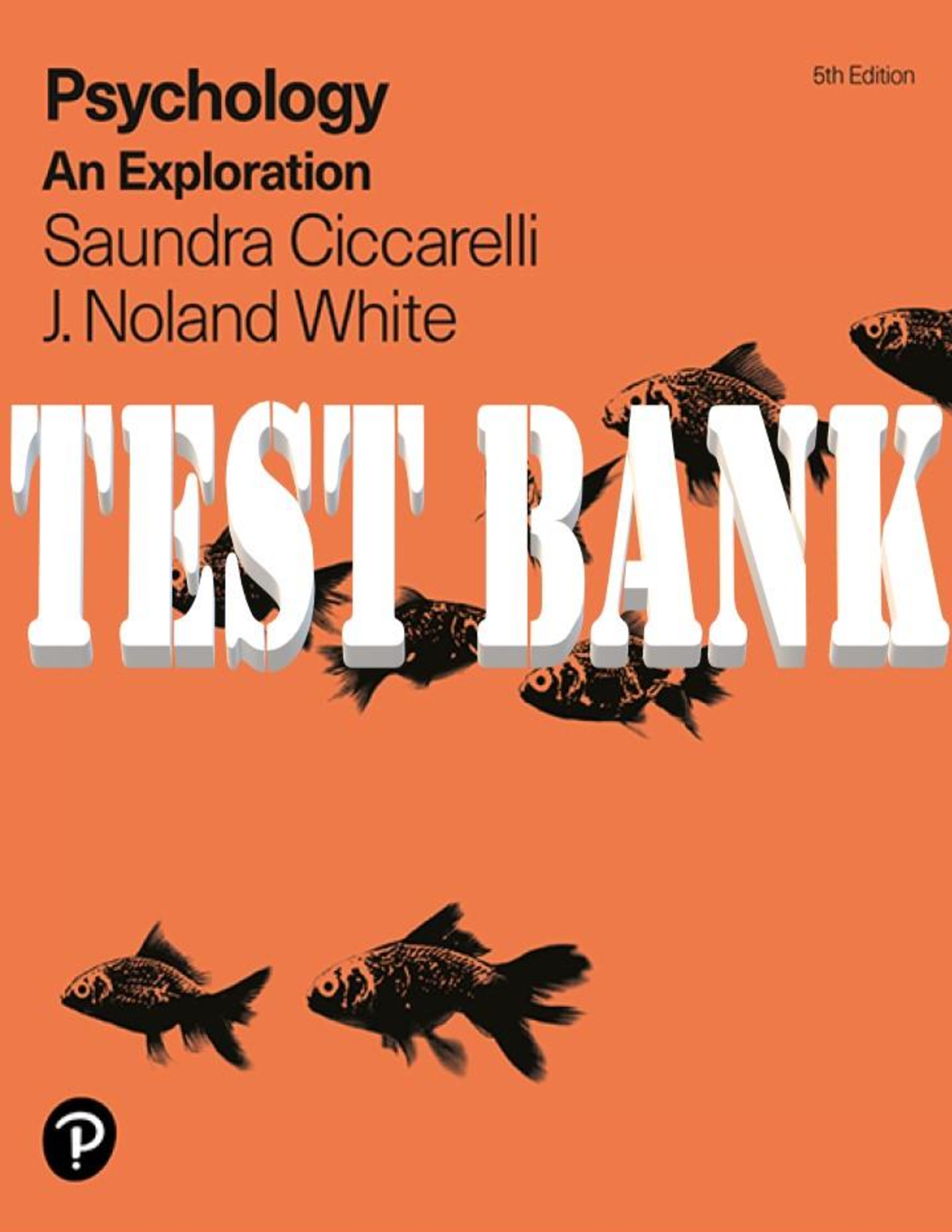
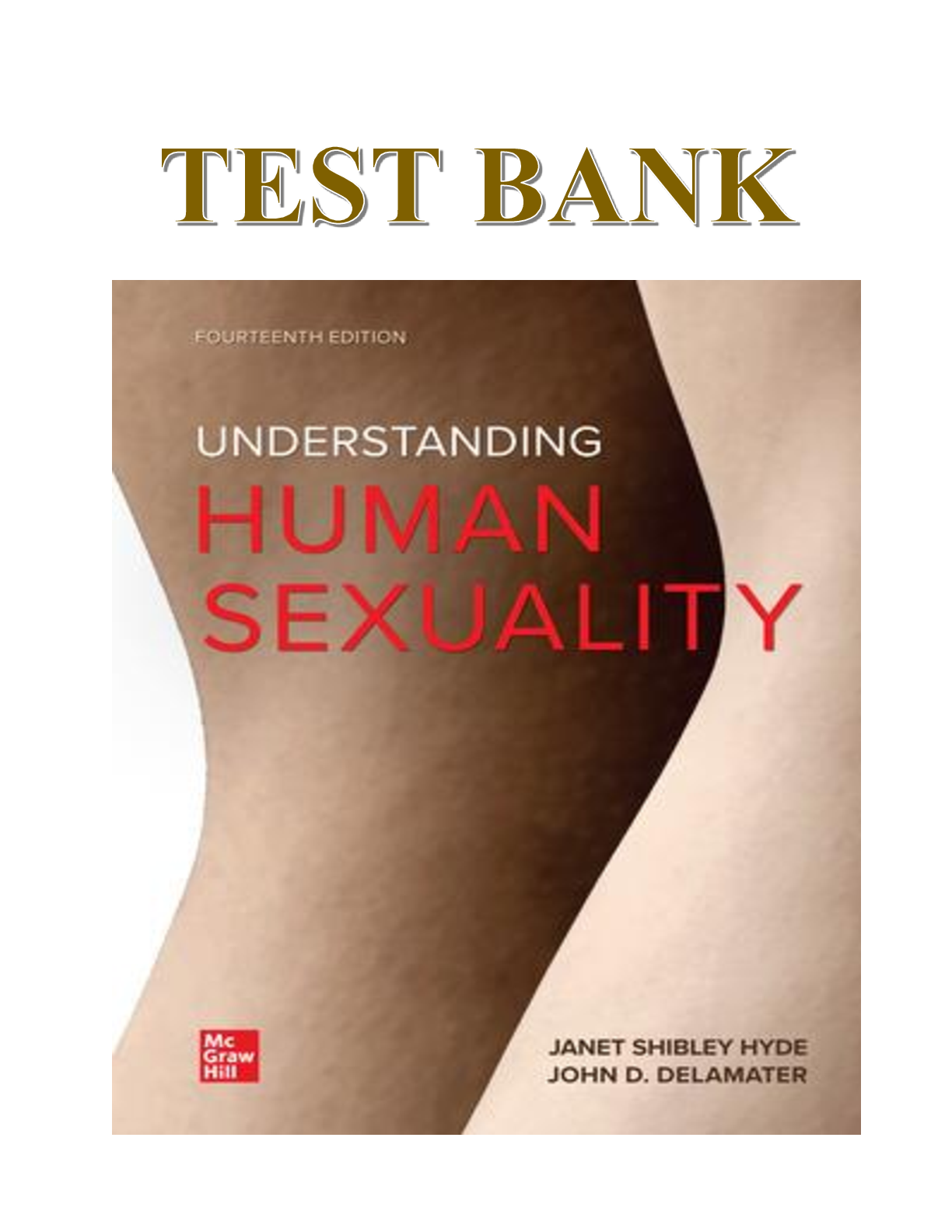
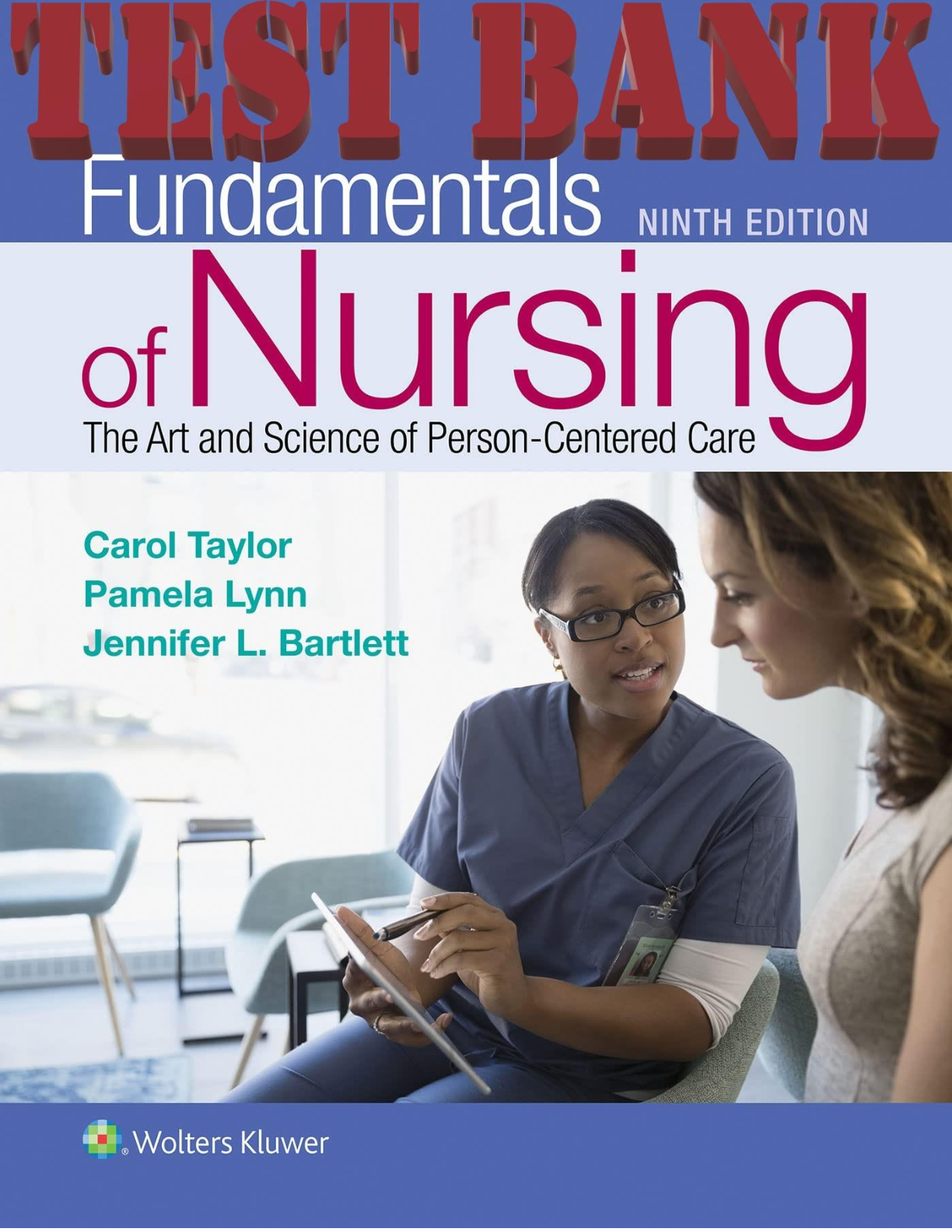

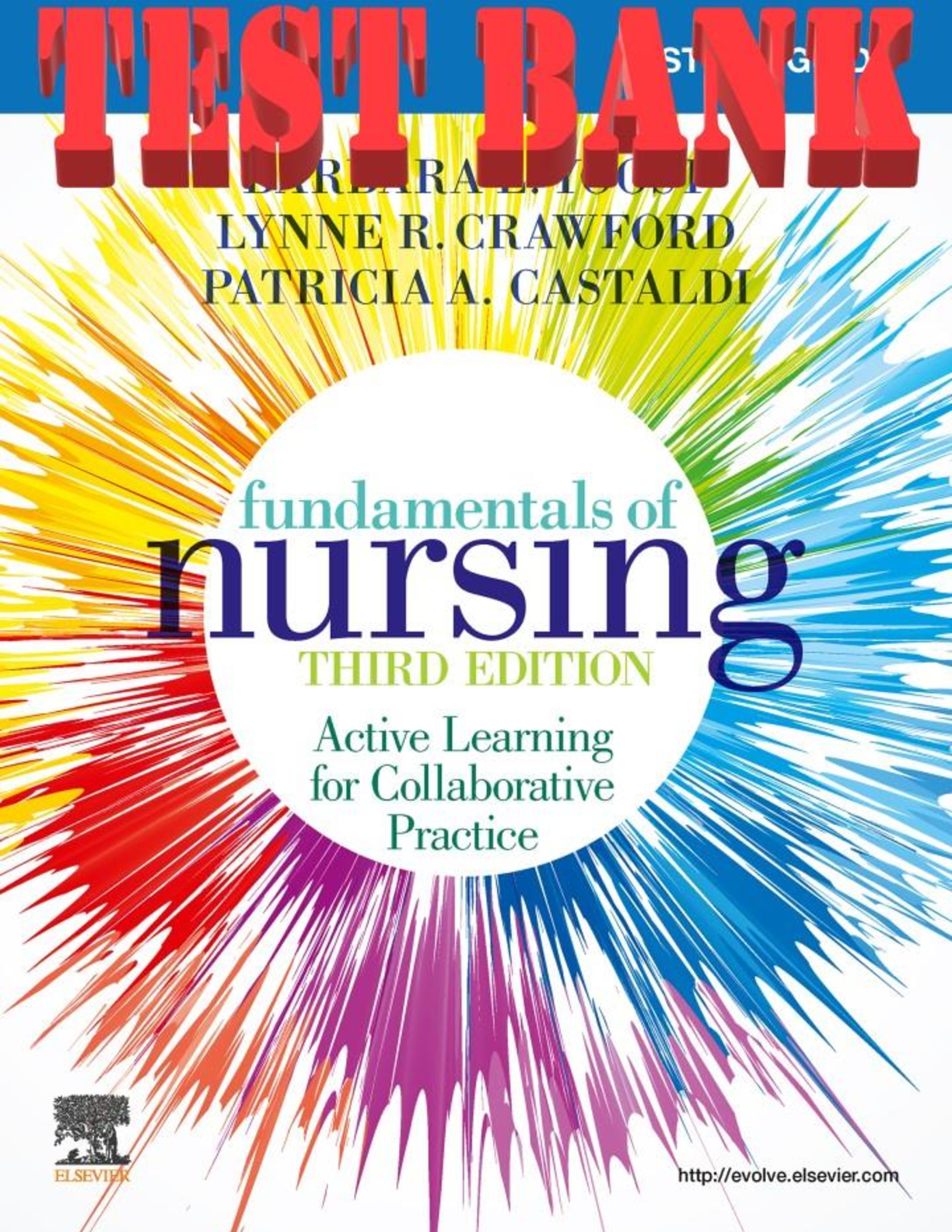

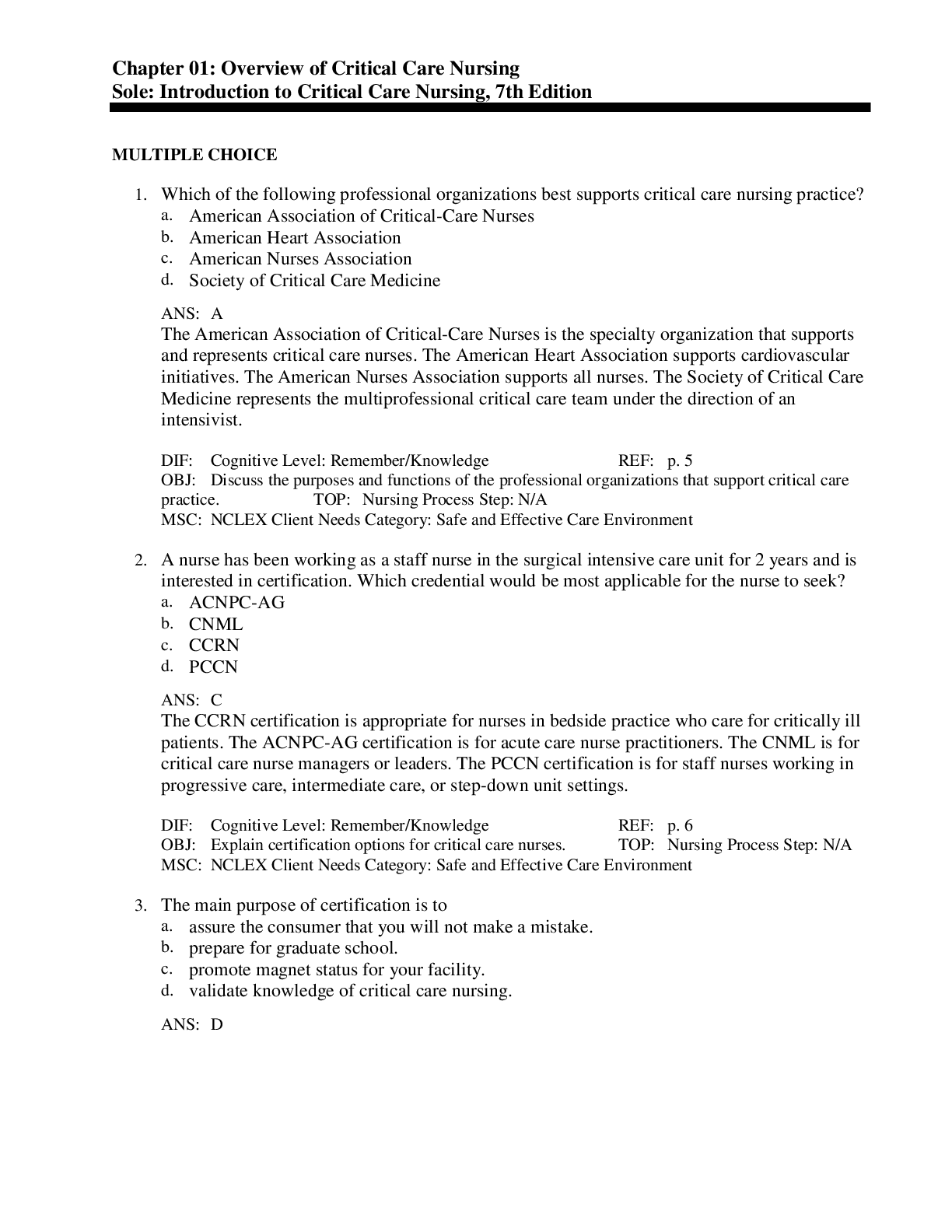
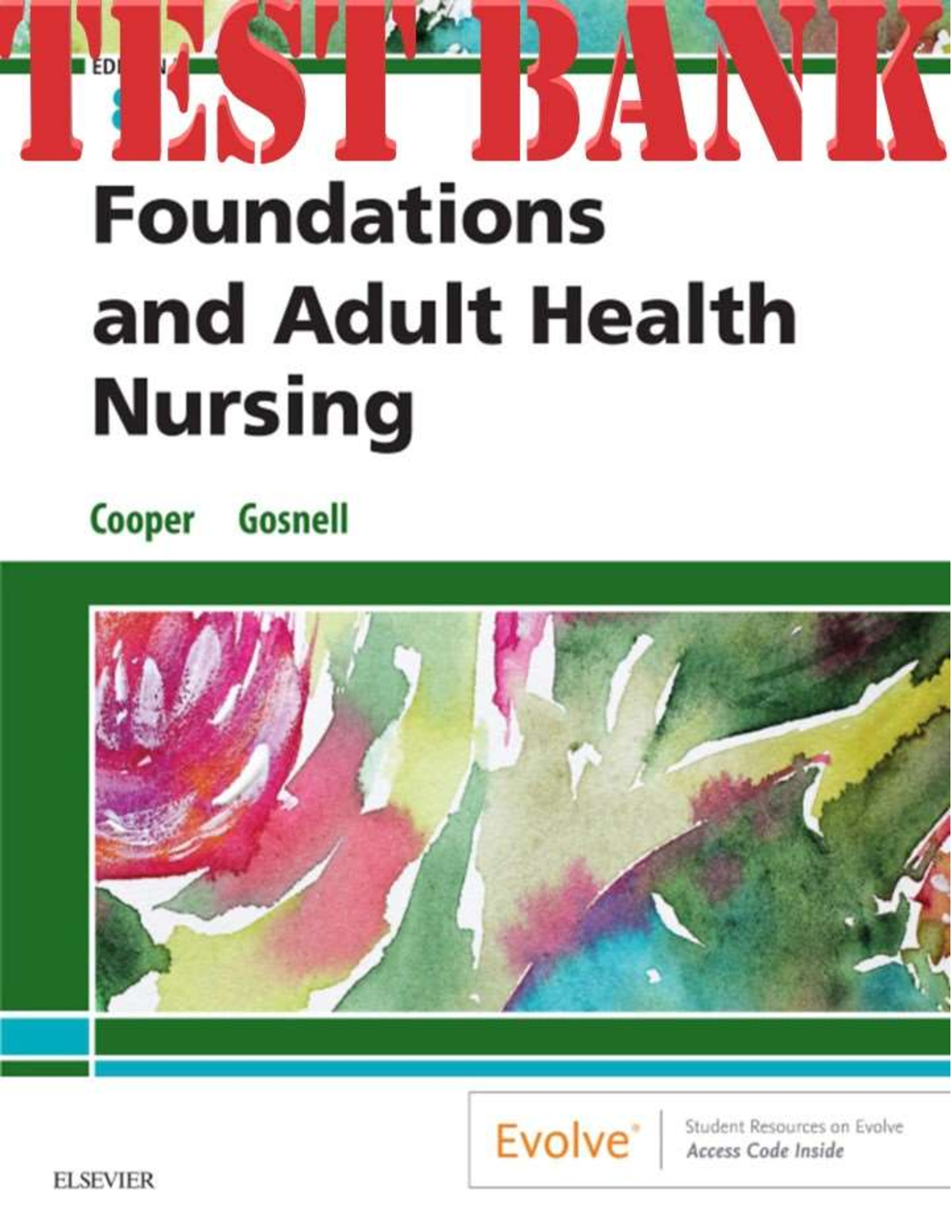

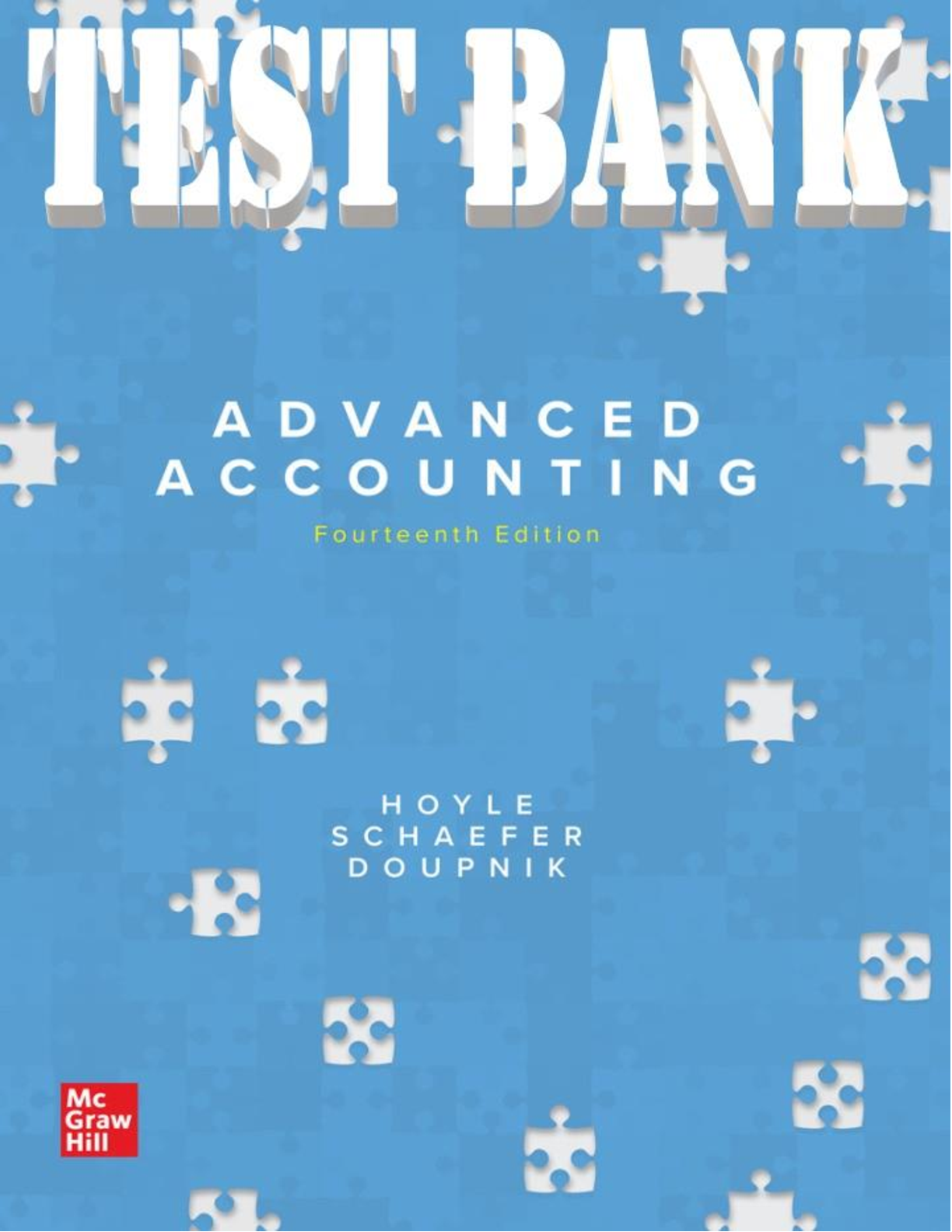
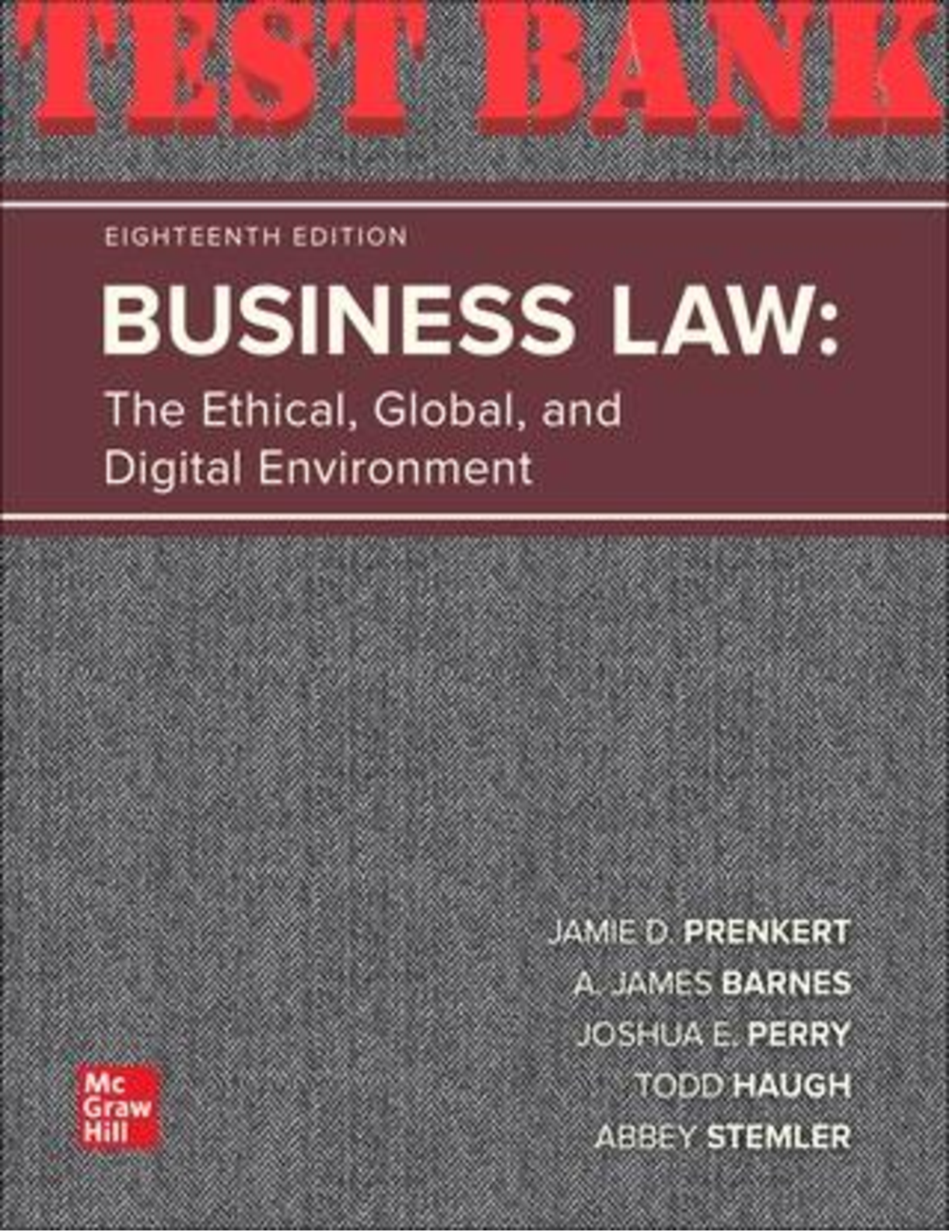

.png)
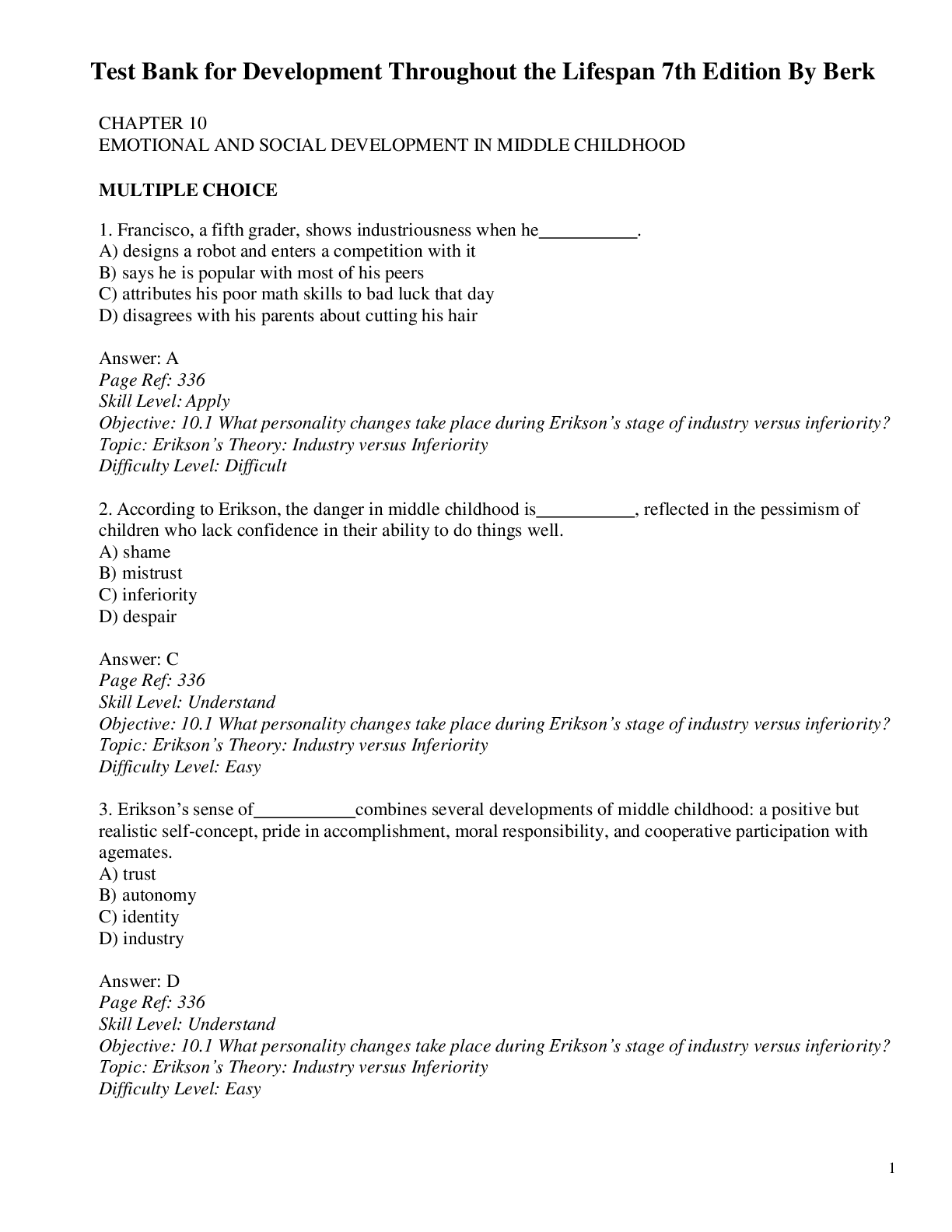

.png)
